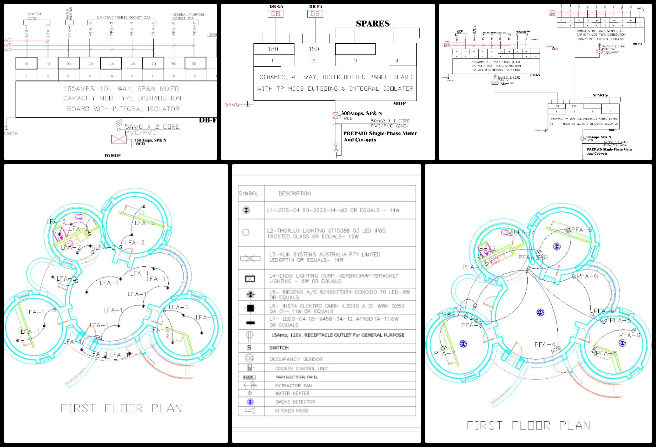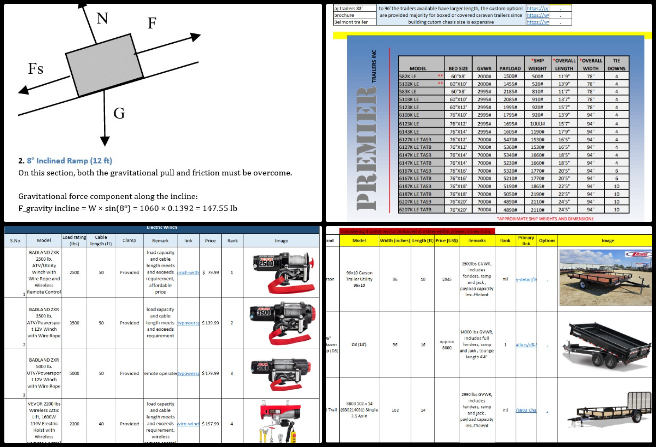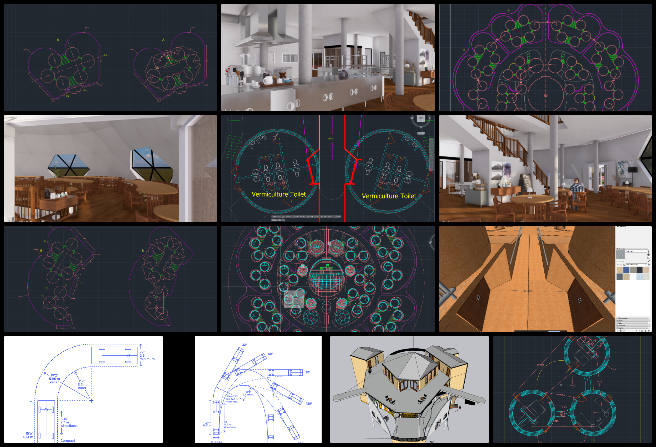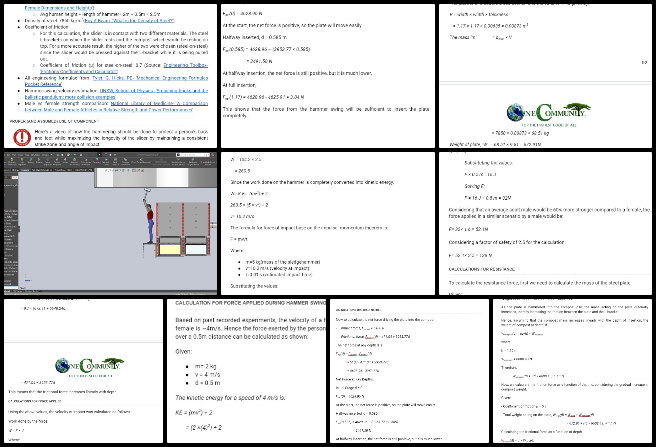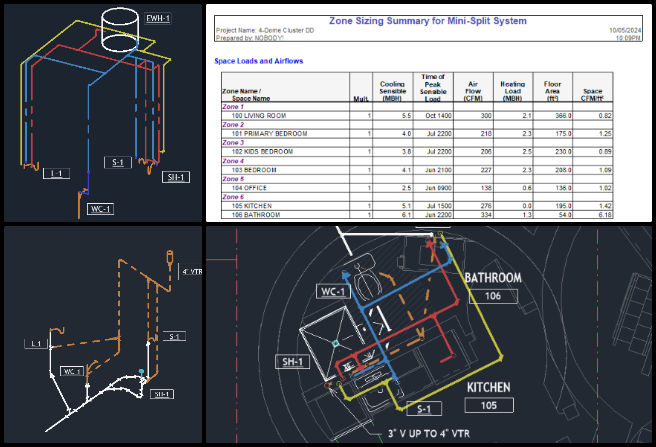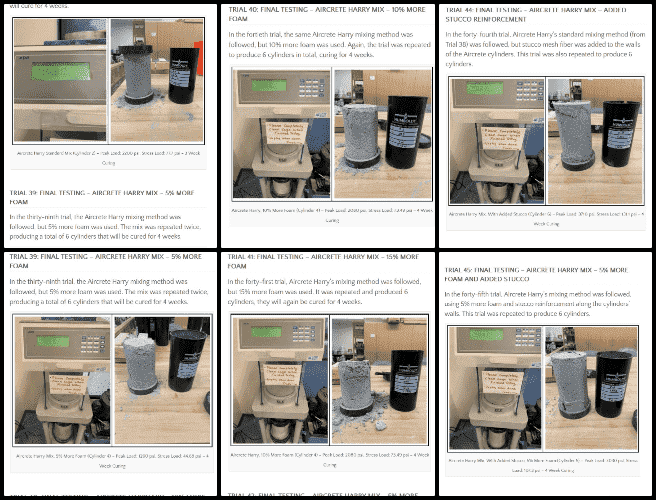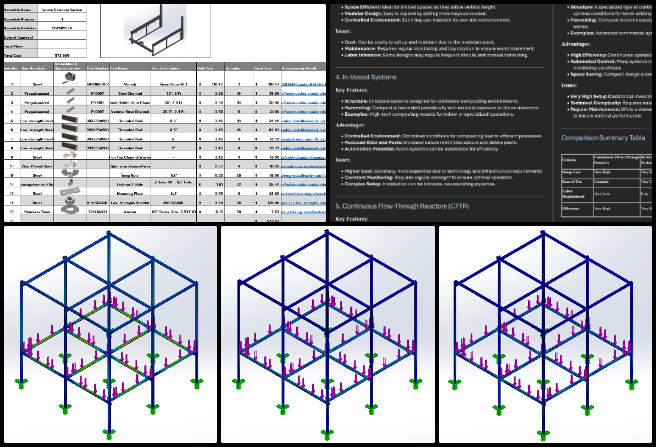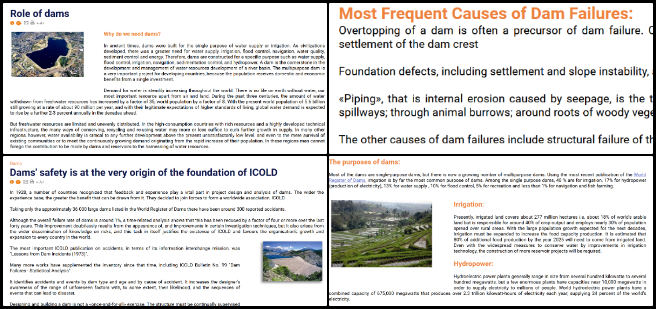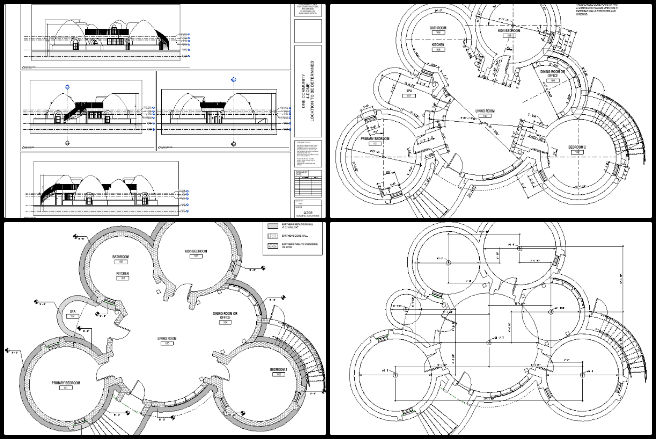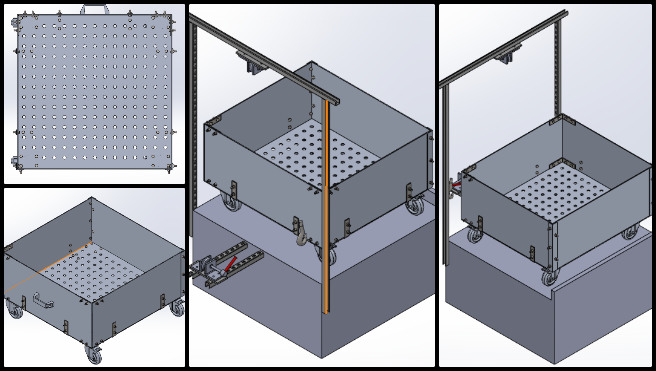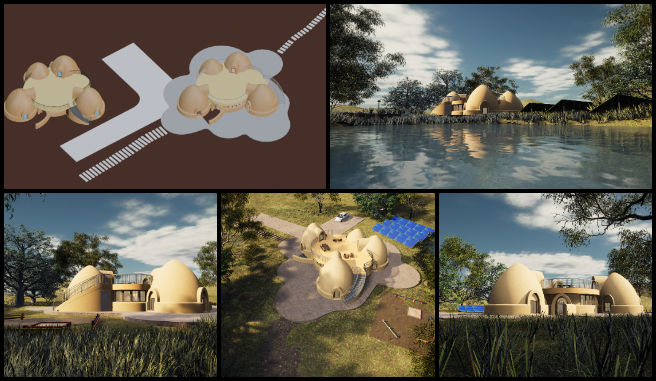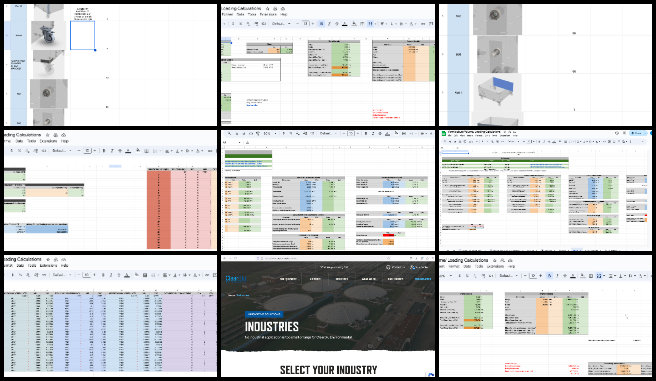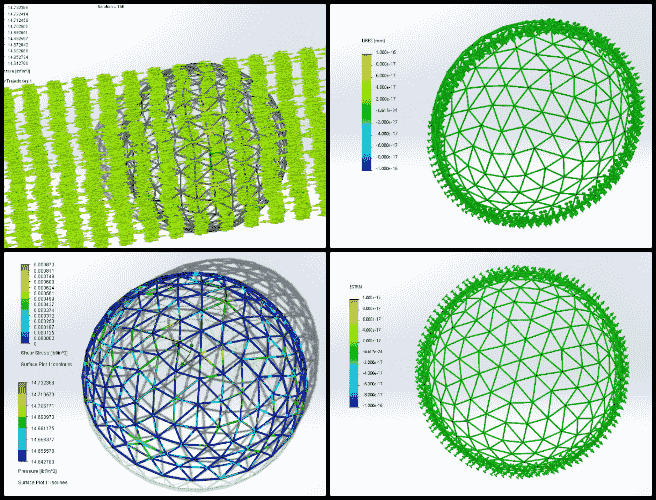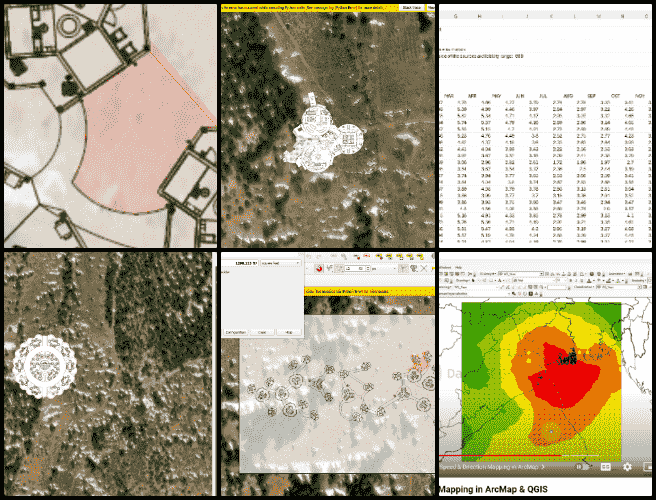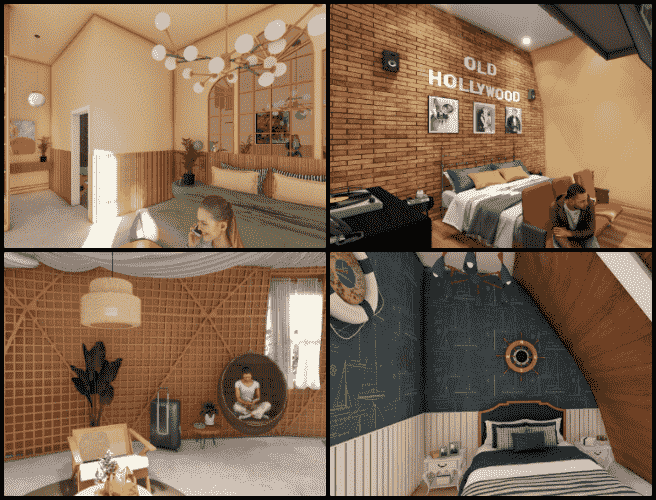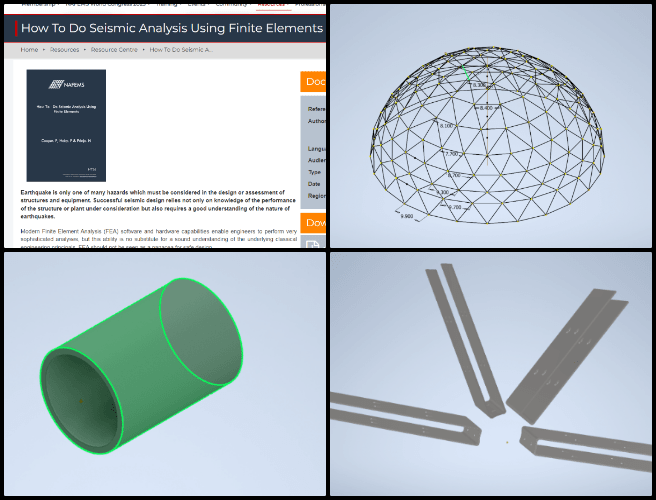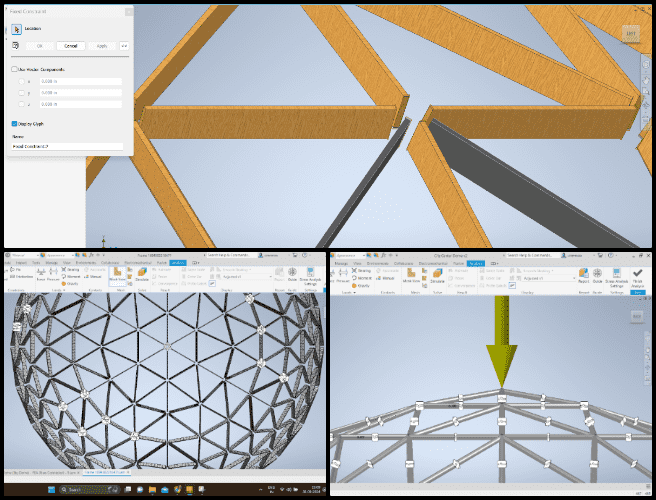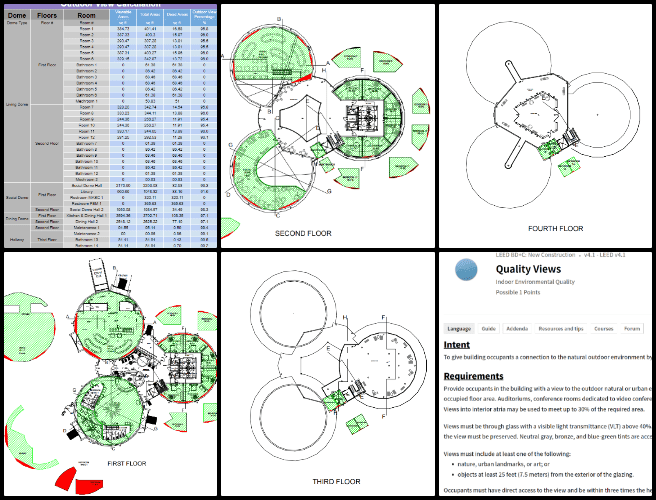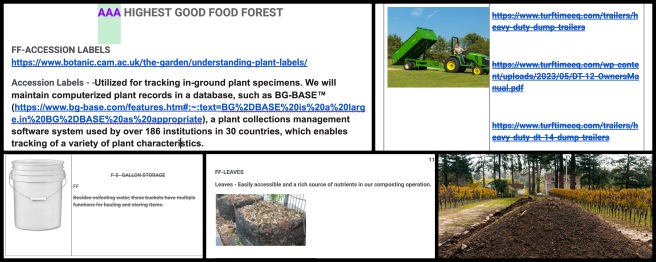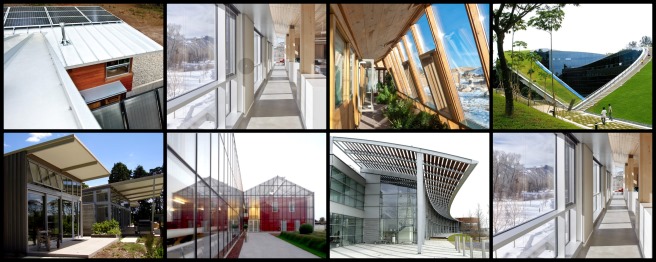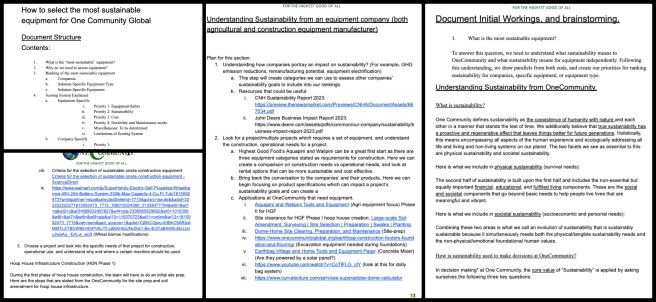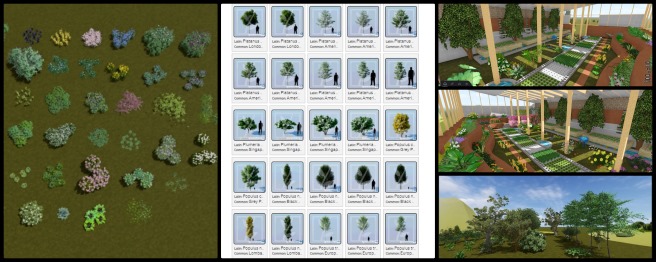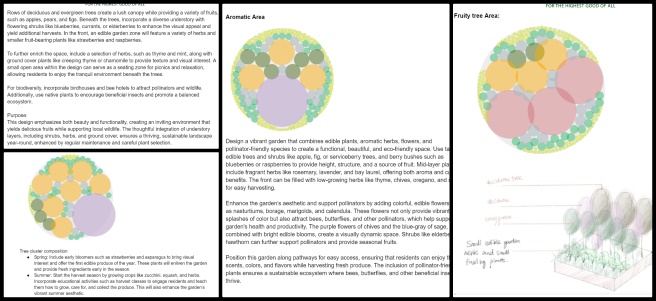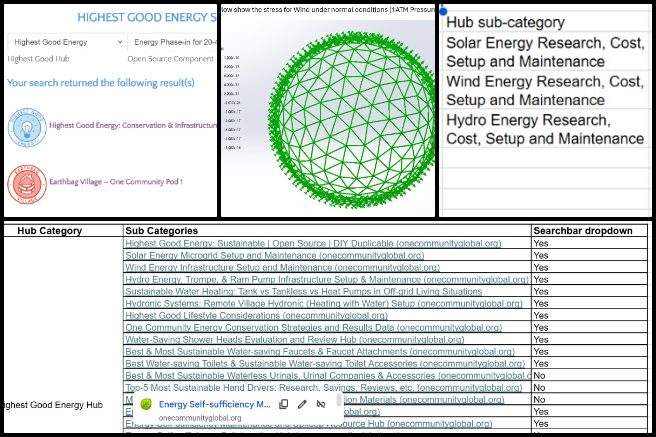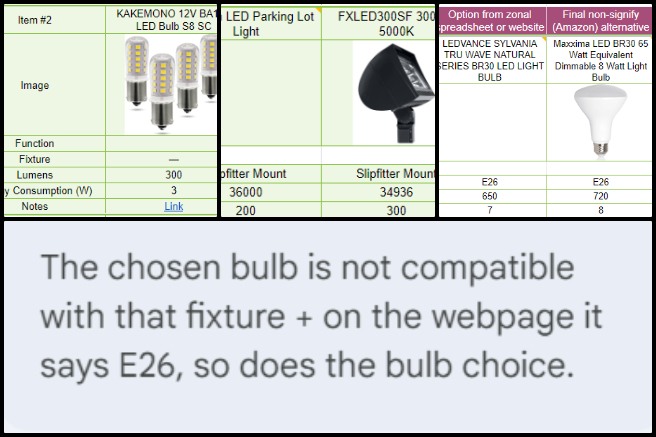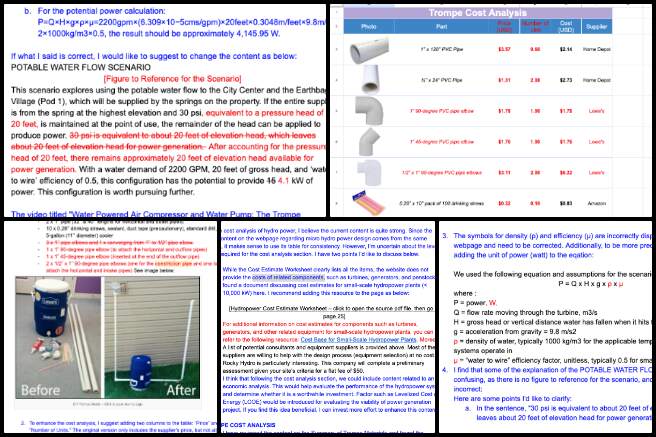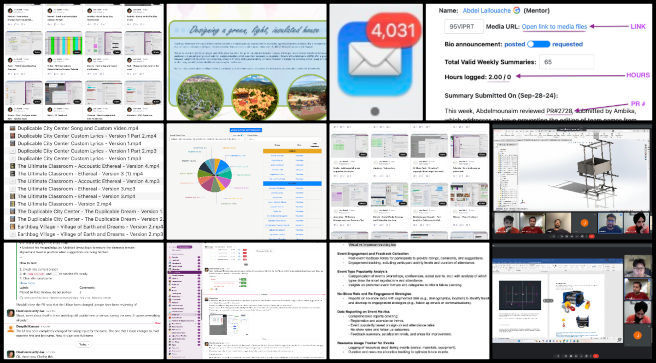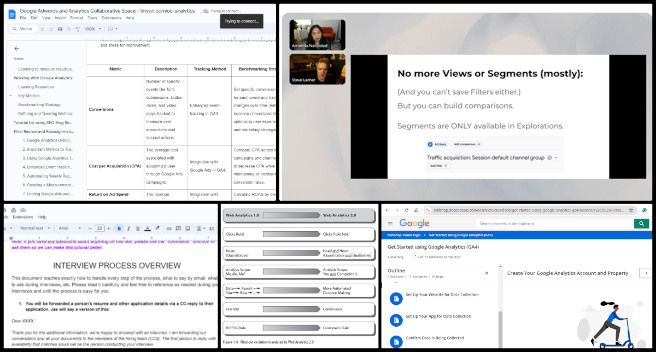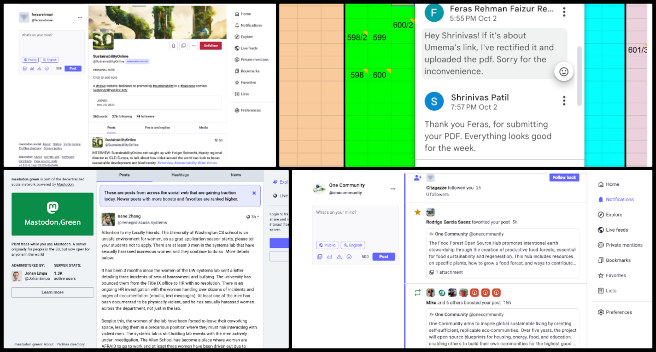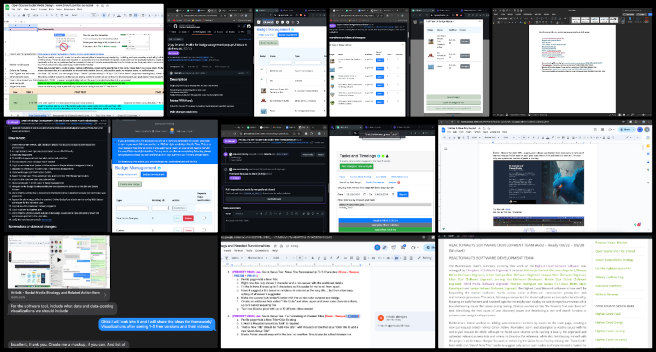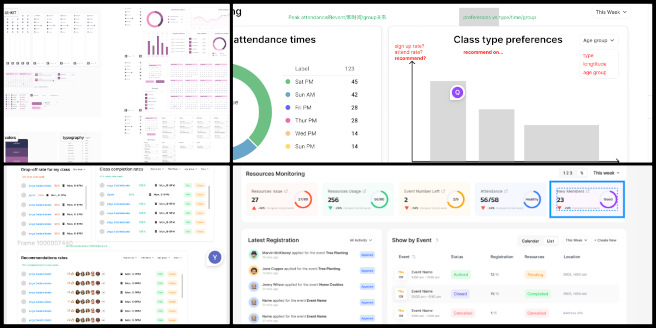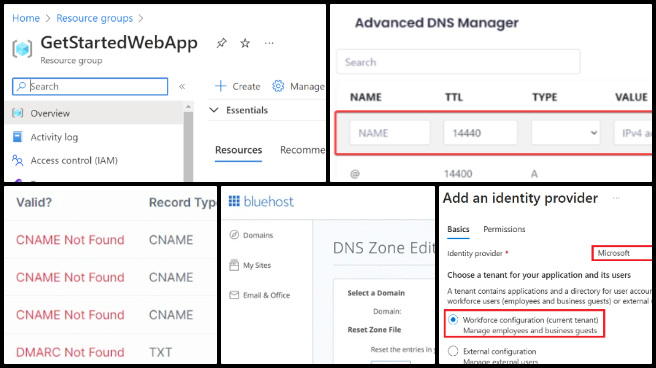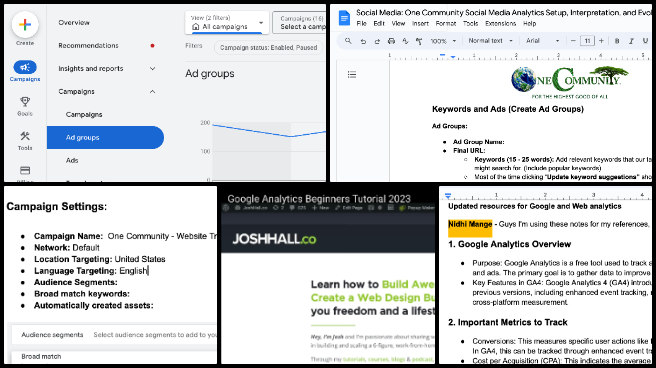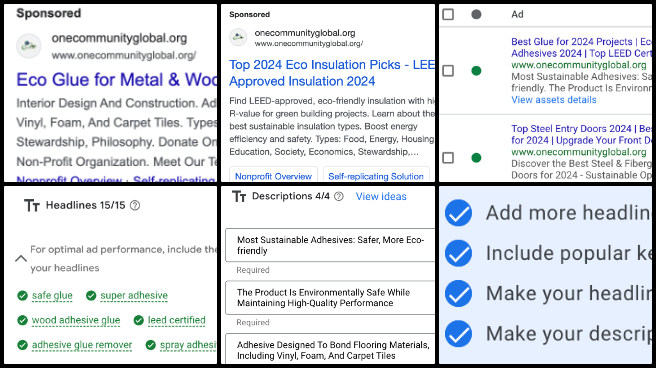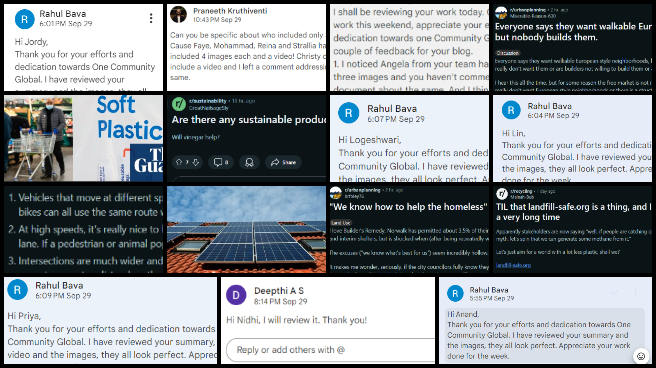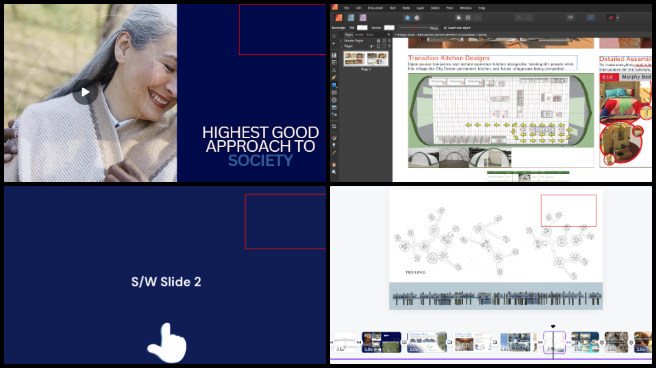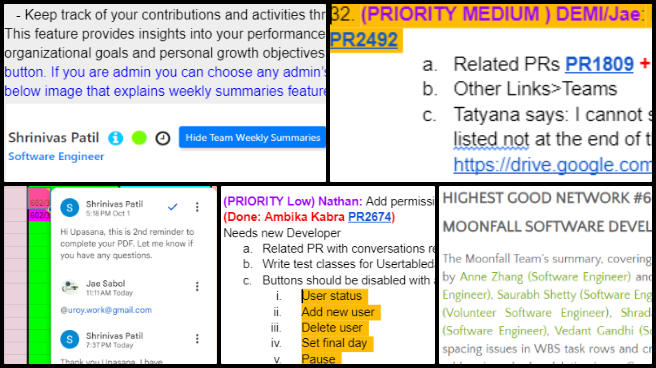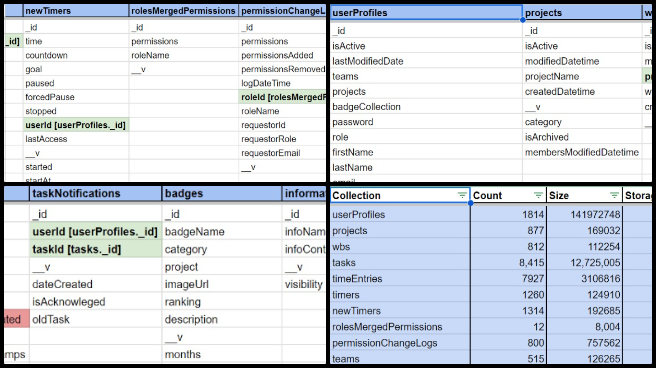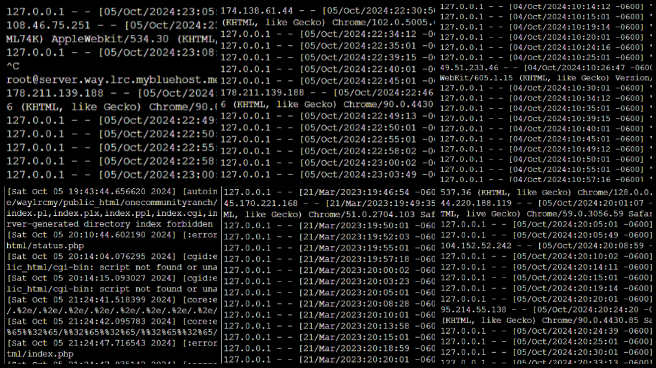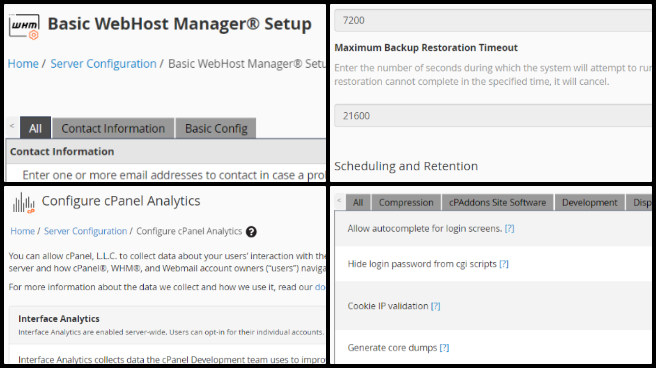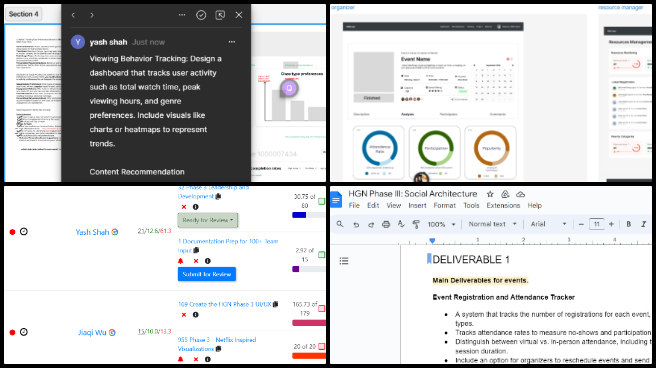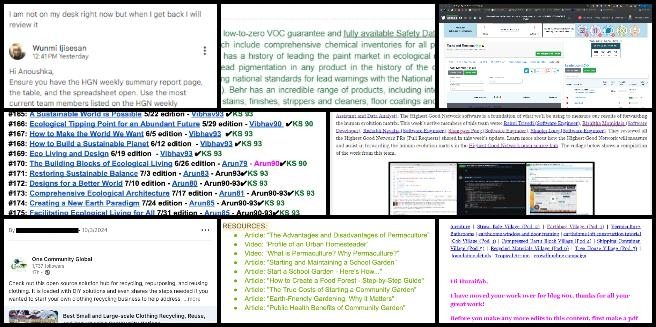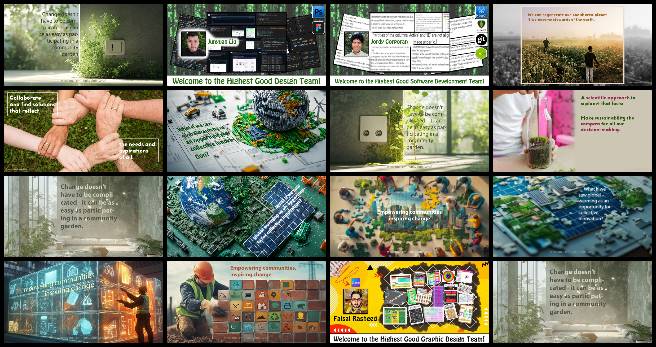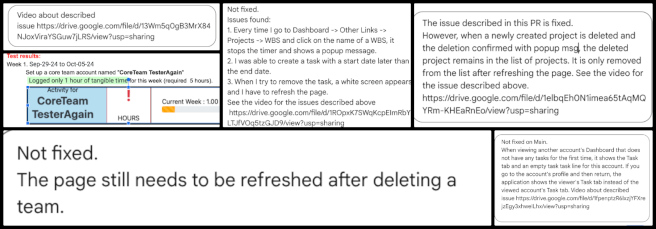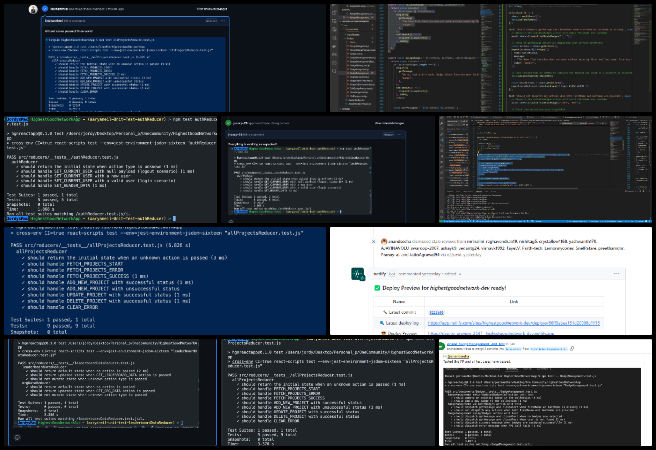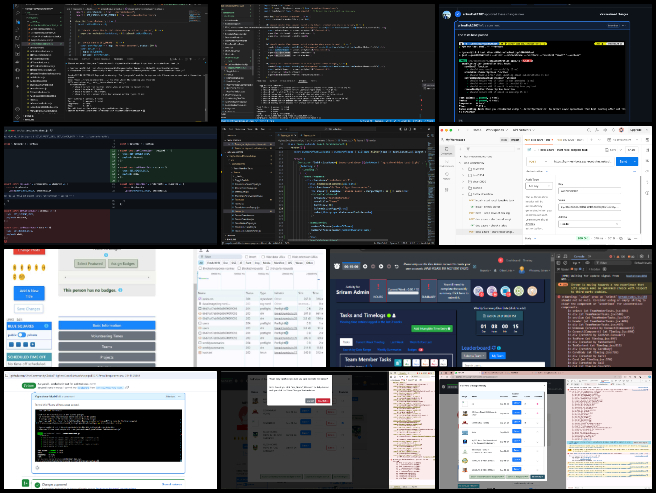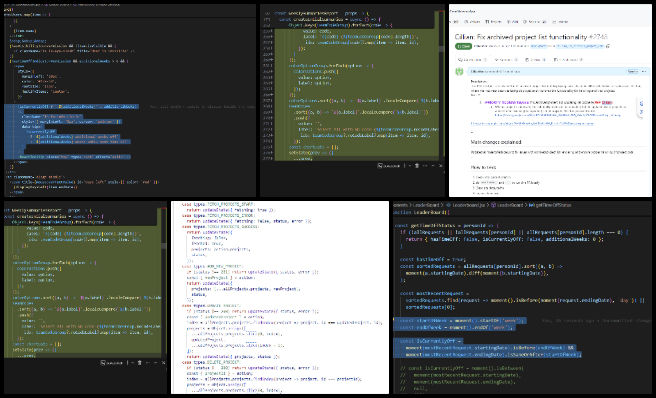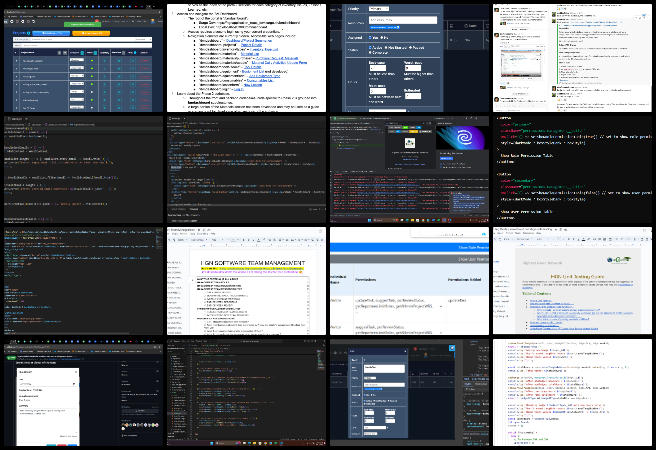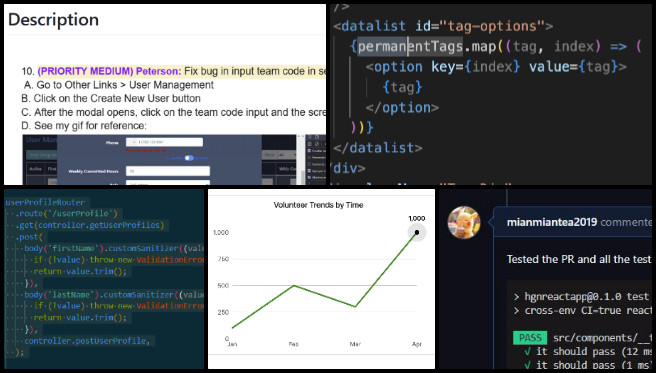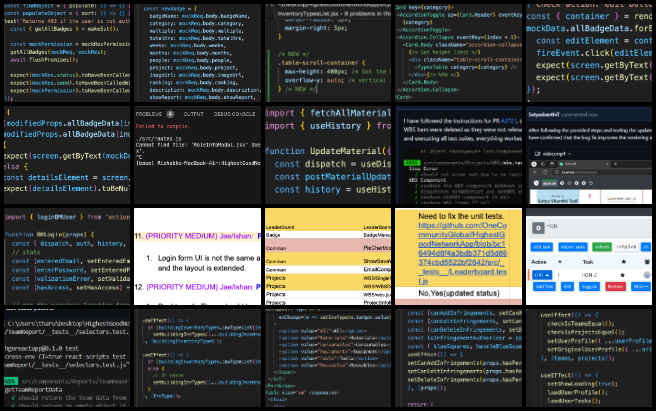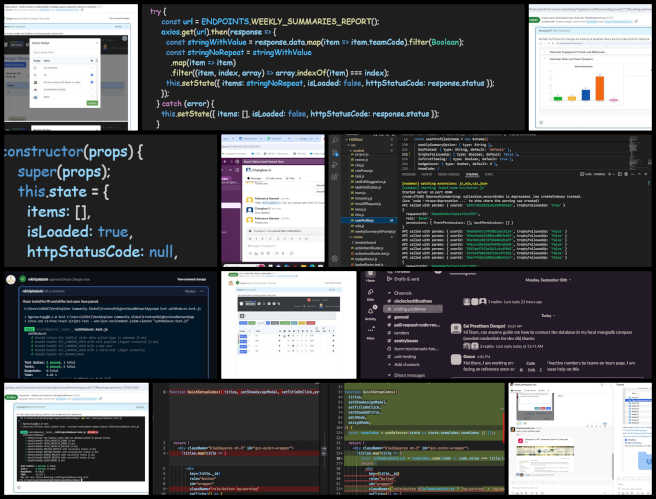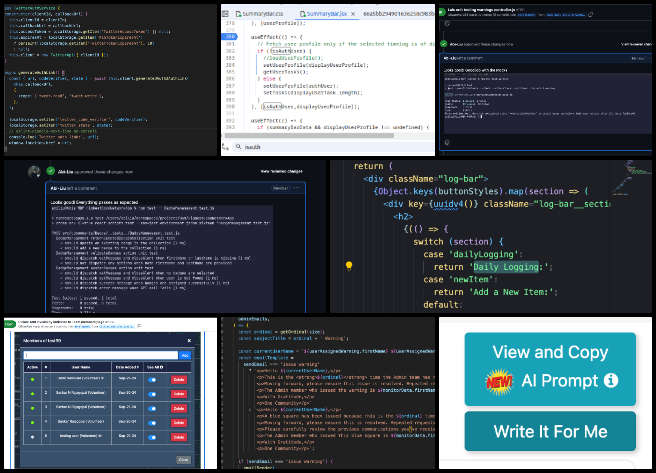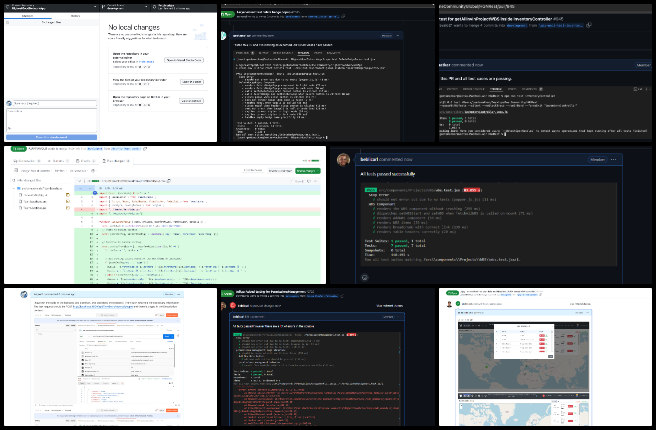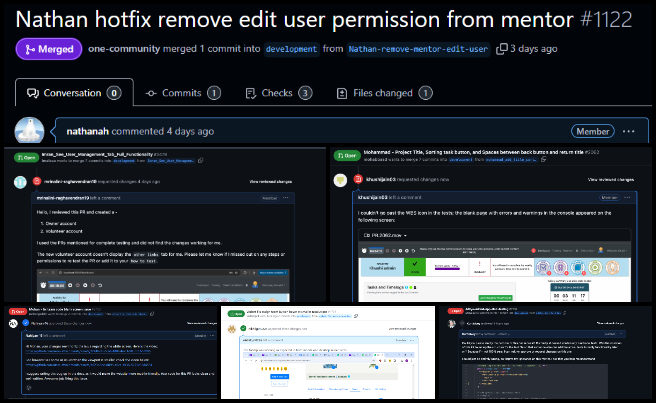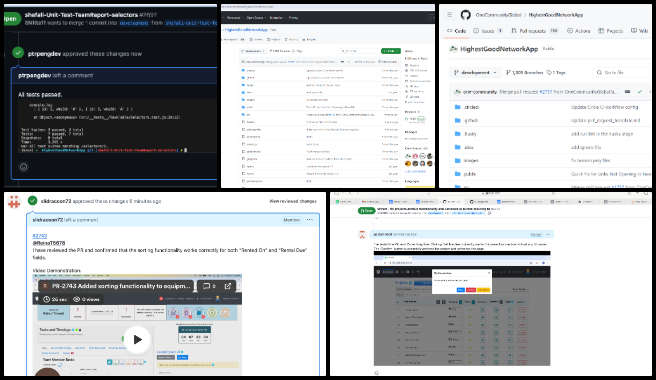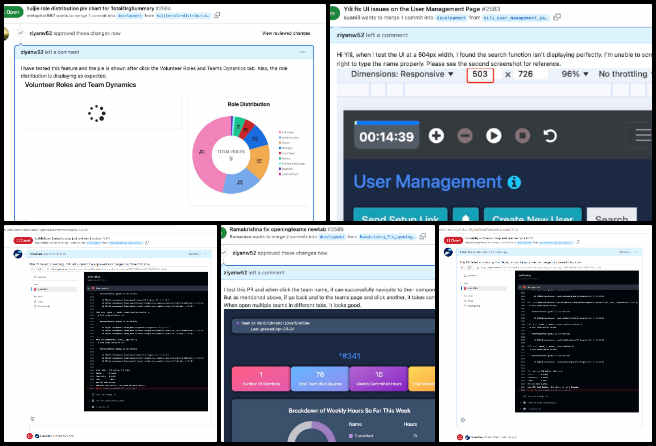Becoming the Most Reparative Element – One Community Weekly Progress Update #603
At One Community, we are becoming the most reparative element in the journey to regenerate our planet and create a world that works for everyone. Our all-volunteer team is building a self-replicating model focused on sustainable approaches to food, energy, housing, education, economics, and social architecture. By open sourcing and free sharing the entire process, we aim to inspire a global network of teacher/demonstration hubs, all for “The Highest Good of All.” Together, we are evolving sustainability and fostering fulfilled living through global stewardship practices designed to last for generations.
- Here’s our project overview
- Here’s our world-change methodology
- Here’s how this becomes self-replicating
- Here’s how we are open source and free-sharing all the do-it-yourself designs
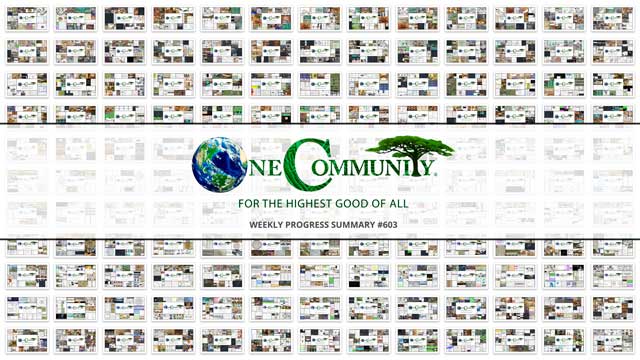
OUR MAIN OPEN SOURCE HUBS
Click on each icon to be taken to the corresponding Highest Good hub page.
One Community’s physical location will forward this movement as the first of many self-replicating teacher/demonstration communities, villages, and cities to be built around the world. This is the October 7th, 2024 edition (#603) of our weekly progress update detailing our team’s development and accomplishments:
Becoming the Most Reparative Element
One Community Progress Update #603
DONATE | COLLABORATE | HELP WITH LARGE-SCALE FUNDING
CLICK HERE IF YOU’D LIKE TO RECEIVE AN EMAIL EACH WEEK WHEN WE RELEASE A NEW UPDATE
YOU CAN ALSO JOIN US THROUGH SOCIAL MEDIA
ONE COMMUNITY WEEKLY UPDATE DETAILS
HIGHEST GOOD HOUSING PROGRESS
 One Community is becoming the most reparative element through Highest Good housing that is artistic and beautiful, more affordable, more space efficient, lasts longer, DIY buildable, and constructed with healthy and sustainable materials:
One Community is becoming the most reparative element through Highest Good housing that is artistic and beautiful, more affordable, more space efficient, lasts longer, DIY buildable, and constructed with healthy and sustainable materials:
- Learn about: Our Upcoming Crowdfunding Campaign
- Learn about the different village models: 7 Sustainable Village Models
- Visit the open source portals for the first two: Earthbag Village OS Hub | Straw Bale Village OS Hub
This week, Adefola (Fola) Madehin (Electrical Design Specialist) continued his work with Earthbag Village electrical designs. Fola completed the lighting and power design for the first floor of the Earthbag Village 4 Dome Project. The design covered essential elements such as lighting fixtures, switches, cable wiring, exhaust fans, and kitchen hoods. Socket provisions were made for appliances including TVs, air conditioning units, dishwashers, washing machines, and electric cookers. A main electrical panel schematic diagram was also developed, outlining circuit connections and specifying cable. The Earthbag Village is the first of 7 to be built as the housing component of One Community’s open source model for becoming the most reparative element. See some of his work in the collage below.
Adil Zulfiquar (Engineer) continued working on the Vermiculture Toilet designs. This model aims to offer sustainable solutions that not only address waste processing but also enhance living standards by becoming the most reparative element. Adil held a discussion with the architect to evaluate the feasibility of widening the ramp and the factors involved. The wide-body trailer list page was updated to incorporate additional considerations and challenges. A list of electric winch options was explored and organized, followed by finalizing and verifying the calculations for winch requirements to load containers at various angles. Options for utility trailers were prepared, taking into account the new wide-body design requirement. Custom trailer options were researched and analyzed through discussions with vendors to better understand their offerings, while further insights were gained into the container loading and unloading processes. The Earthbag Village is the first of 7 to be built as the housing component of One Community’s open source model for becoming the most reparative element. See some of his work in the collage below. See below for some of the pictures related to this work.
Akshit Sethi (Architectural Designer) continued working on finalizing the interior of the Earthbag Village 4-dome home design. Akshit worked on the AutoCAD file to address the size discrepancies between the ramp and paths in the SketchUp and CAD files. In addition to resolving these inconsistencies, he focused on elevating the document to a professional standard, ensuring it aligned with the quality of existing drawings by One Community. His tasks included adding precise dimensions and correcting any issues related to sizes and standards, ensuring the file met all necessary specifications for further use. The Earthbag village is the first of 7 villages to be built as part of One Community’s open source model for becoming the most reparative element. See his work in the collage below.
Anil Karathra (Mechanical Engineer) continued working on the Vermiculture Toilet designs. Anil researched the forces involved in swinging a hammer for impact and developed a CAD model to calculate the space required under an eco-toilet cabin. He participated in a team meeting and worked on the finite element analysis (FEA) of a winch system. Additionally, he modified the task list by adding new sections and completed document formatting tasks. Anil recalculated previous numbers for a new FEA based on his research on the forces applied to swing a hammer. He also updated the hammer impact calculations in a slide for the vermiculture collaboration document. The approach of becoming the most reparative element enables the development of innovative solutions that are both environmentally friendly and effective. See below for some of the pictures related to this work.
Avery Hamilton (Mechanical Designer) continued working on finalizing the interior of the Earthbag Village 4-dome home design. Avery worked on developing a HAP model, documenting both the HAP assumptions and the envelope dimensions to ensure accuracy. The process included routing the rough-ins for plumbing systems, which required detailed planning to accommodate the building layout. Avery also created Revit risers for both domestic and sanitary piping systems, ensuring proper integration within the overall design. In addition to these tasks, Avery did research on the 2018 International Residential Code (IRC), focusing specifically on the requirements for residential range hoods and domestic water recirculation systems to ensure compliance with current regulations. The Earthbag village is the first of 7 villages to be built as part of One Community’s open source model for becoming the most reparative element. See his work in the collage below.
Charles Gooley (Web Designer) continued working on the Aircrete Engineering and Research: Compression Testing, Mix Ratios, R-value, and More page. He worked on the engineering steps, research, resources, and tools used to verify the safety of aircrete designs and structures. The tasks involved resizing and posting multiple images, adding links to several videos, and handling the resizing and posting of images for 64 mixing procedures. Aircrete is an alternative we’re exploring for the Earthbag Village, a foundational part of One Community’s open-source model for becoming the most reparative element. Take a look at some of this work in the images below.
Joseph Osayande (Mechanical Engineer) continued helping finish the Vermiculture Toilet engineering and design details. Joseph focused on enhancing the bill of materials (BOM) by adding images and providing more extensive details for each part, as well as a breakdown of the overall costs. A mesh was created for the main structure of the vermiculture chamber, followed by analysis to gather the required outputs. Additionally, the reports comparing the vermiculture systems and the walkthrough for the FEA analysis were converted to the default format required for One Community Global. The Earthbag Village is the first of 7 to be built as the housing component of One Community’s open source model for becoming the most reparative element. See some of his work in the collage below.
Loza Ayehutsega (Civil Engineer/Assistant Civil Engineer) completed another week working on the Earth Dam risk assessment and dam break hazard assessment. Loza followed webinars and conferences about dam safety engineering. She is a member of ICOLD (International Commission on Large Dams). The International Commission on Large Dams (ICOLD) is a prominent international non-governmental organization dedicated to professionally sharing information regarding large dams. Dam safety engineering is a critical field that focuses on the design, evaluation, monitoring, and rehabilitation of dams to ensure their integrity and the safety of surrounding communities. This discipline encompasses various methodologies, risk management practices, and technological solutions that aim to reduce the likelihood of dam failures and their associated consequences. Ensuring dam safety measures and preparedness are a foundation of One Community’s open source earthworks as part of becoming the most reparative element. See the pictures below for examples related to her work.
Michaela Silva (Architect) continued working on finalizing the interior of the Earthbag Village 4-dome home design. Michaela focused on coordinating the updated 4-dome floor plans with the MEP and Roof Deck teams, and confirmed that the team was using the correct structural plan. She also reviewed electrical drawings and schedules to ensure they aligned with the architectural plan. In addition to this coordination, Michaela continued updating the plan views to incorporate the latest design changes. The Earthbag village is the first of 7 villages to be built as part of One Community’s open source model for becoming the most reparative element. See her work in the collage below.
Yagyansh Maheshwari (Mechanical Engineer) continued helping finish the Vermiculture Toilet engineering and design details. Yagyansh worked on reducing the bolt length to the minimum, and the bolt was replaced with a lock bolt where required. The fit of the drawer to the dome was checked, and finite element analysis (FEA) was performed on the drawer to assess its capacity to handle the weight and the pulling force of the winch. The Earthbag Village is the first of 7 to be built as the housing component of One Community’s open source model for becoming the most reparative element. See some of his work in the collage below.
Yuxing Xu (VFX Artist) continued working on making videos for the Earthbag Village 4-dome home design. Yuxing focused on the updated building model, receiving the obj file and improving the geometry by separating material layers and fixing mesh openings. He imported the model into Unreal Engine for material assignment and made adjustments to the surrounding environment, with particular attention to refining the shape of the pond.The Earthbag Village is the first of 7 to be built as the housing component of One Community’s open source model for becoming the most reparative element. See some of his work in the collage below.
Yuze Tang (Architect) started working on Vermiculture Toilet designs. Yuze focused on three primary tasks. The first task involved finalizing the aesthetic enhancements to a spreadsheet, excluding Joseph’s table, as it was noted in last week’s meeting that Joseph would handle that section. Next, Yuze initiated a new spreadsheet aimed at analyzing cost reduction for a drawer project. This involved constructing the table and transferring data from the CAD file. The final task entailed researching the development of home biogas systems, with plans to compile the findings into a Word document. The approach of becoming the most reparative element enables the development of innovative solutions that are both environmentally friendly and effective. See below for some of the pictures related to this work.
EARTHBAG VILLAGE 4-DOME ROOF TEAM
The Earthbag Village 4-dome Roof Team was managed by Khushboo Parmar (Project Manager) and includes Karthik Pillai (Volunteer Mechanical Engineer) and Yusuf Thanawala (Structural Engineer). The Earthbag Village forms the basis of One Community’s open source model for becoming the most reparative element. This week, Khushboo led the Earthbag Village MEP bi-weekly meeting, concentrating on team communication to initiate the project’s HVAC component while ensuring alignment between mechanical and architectural aspects. The meeting addressed blockers and questions to facilitate project progress. Additionally, she chaired the 4-Dome Cluster Roof weekly meeting, where she ensured project alignment and established next steps. Khushboo also handled administrative tasks, including verifying that all team members had access to project documents. Khushboo also manages Michaela Silva, Adefola Madehin, Prarthana Jathar, and Avery Hamilton. Karthik did a wood FEA analysis using Tekla software, exploring its functionalities through tutorials to effectively tackle current design challenges and enhance structural analysis. Yusuf completed his STAAD model and is currently working on the report elements for the 4-Dome structural report, referencing similar previous calculations from the project and planning to include STAAD verification calculations. He aims to complete this task by Sunday and will forward it for review to all involved. The Earthbag village is an integral part of One Community’s open source model for becoming the most reparative element. See their work in the collage below.
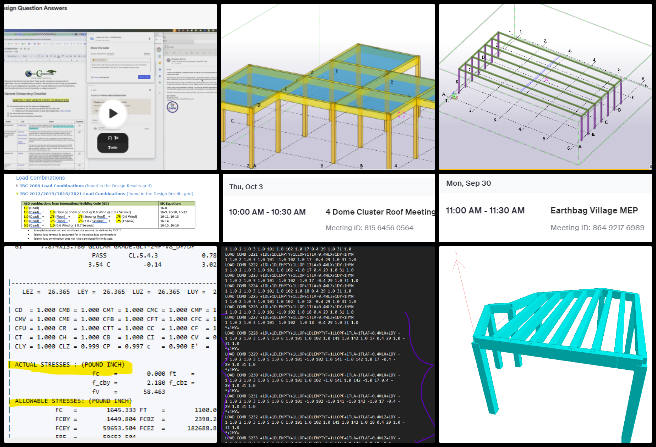
DUPLICABLE CITY CENTER PROGRESS
 One Community is becoming the most reparative element through a Duplicable and Sustainable City Center that is LEED Platinum certified/Sustainable, can feed 200 people at a time, provide laundry for over 300 people, is beautiful, spacious, and saves resources, money, and space:
One Community is becoming the most reparative element through a Duplicable and Sustainable City Center that is LEED Platinum certified/Sustainable, can feed 200 people at a time, provide laundry for over 300 people, is beautiful, spacious, and saves resources, money, and space:
- Learn about this building and it’s function in becoming the most reparative element: Duplicable City Center Open Source Hub
This week, Arnob Mutsuddi (Mechanical Engineer) continued working on Duplicable City Center structural engineering model and details. He studied the Traditional Dome vs. City Center Dome Structural Engineering Loading Comparison Report and attended a meeting to outline the next steps for the project. A work plan for the week was divided during another team meeting. Assistance was provided to a new team member with finite element analysis (FEA). Previous wind load test results were reviewed and integrated into the new iteration. A new flow simulation analysis was initiated on SolidWorks for 80 mph wind loads and completed. Work on a new flow simulation analysis for 150 mph wind loads is ongoing. The Duplicable City Center is a foundational part of One Community’s open-source model, which excels in becoming the most reparative element. This approach is integral to their mission of becoming the most reparative element through innovative and scalable solutions. See some of this work in the pictures below.
Chris Blair (GIS Technician/Horticulturist) continued working with GIS data as part of One Community’s Permaculture Design that includes the location of the Duplicable City Center. He worked with GIS data as part of One Community’s Permaculture Design. He used QGIS, an open-source GIS software, to recreate previous work from proprietary software for improved data access. He enhanced the accuracy of digitized villages on the map, imported PDFs of the city center and villages into QGIS, geo referenced them to create raster data, and digitized both structures and land footprints. He also researched methods for obtaining wind data and different types of wind maps. Within One Community’s open-source framework, the Duplicable City Center plays a central role in becoming the most reparative element. The images below showcase some of this work.
Faeq Abu Alia (Architectural Engineer) continued his work on the Duplicable City Center kitchen shelving and adding dry-storage food items. He focused on addressing feedback related to rooms 4 through 8 in SketchUp by enhancing their visual appearance with additional design elements and rendering them in Lumion. The tasks involved refining specific details in each room to improve their overall presentation. Faeq also completed the walkthrough videos for these five rooms using Lumion, ensuring they accurately reflected the updates made. The Duplicable City Center represents a fundamental element of One Community’s open-source approach, dedicated to becoming the most reparative element. View examples of this work in the pictures provided below.
Nika Gavran (Industrial Designer) continued her work on the Duplicable City Center dormer window installation plans. She focused on expanding the final document for the dormer window instructions by incorporating rock wool insulation into the instructions. She removed shadows from images and arranged all re-rendered images into an appealing layout. Additionally, Nika added a materials section for the insulation and compiled all the slides for the document. As a foundational component of One Community’s open-source strategy, the Duplicable City Center is designed for becoming the most reparative element. The images below showcase some of this work.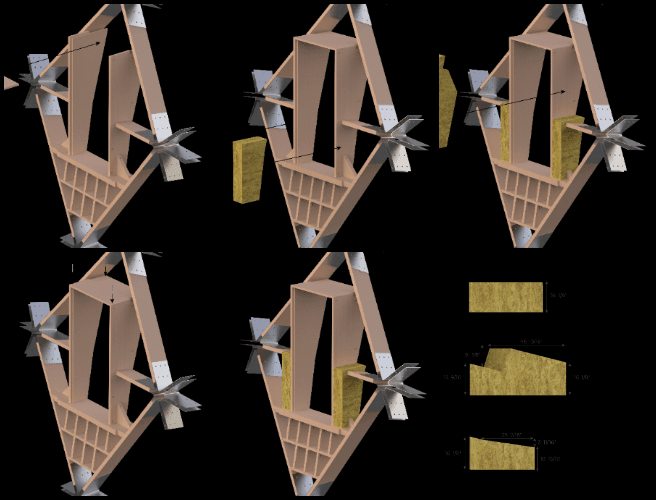
Tasmia Hasan (Design Engineer) continued her work on the structural engineering of the Duplicable City Center. She worked on the hub connector design before receiving clarification from Jae and Rachan. After discussing with the team, a plan was developed for the finite element analysis (FEA). Tasmia then progressed to working on the seismic analysis of the frame, referencing YouTube tutorials and adding constraints to the frame design. As a foundational component of One Community’s open-source strategy, the Duplicable City Center is designed for becoming the most reparative element. You can see examples of this work in the following images.
Umema Ali (Mechanical Design Engineer) began working on the Duplicable City Center Engineering. She performed Finite Element Analysis (FEA) on the vertical load for both the new dome structure and the traditional dome structure. Umema continued her progress by working on the structural analysis of the traditional dome, focusing on defining the boundary conditions and creating the mesh. Additionally, she initiated static analysis of the traditional dome to verify structural integrity. Within One Community’s open-source framework, the Duplicable City Center plays a central role in becoming the most reparative element. The images below showcase some of this work.
Yancong E (Architectural Designer) continued working on the Duplicable City Center project. He checked the USGBC website to find the specific requirements for Quality Views and the criteria for earning points. He continued working in AutoCAD to calculate the Outdoor View percentage for each room, completing the illustration and calculation for all three domes. Additionally, he compared the floor plan with the SketchUp model to identify areas that need adjustments. The Duplicable City Center represents a fundamental element of One Community’s open-source approach, dedicated to becoming the most reparative element. This innovative initiative aims to showcase how becoming the most reparative element can transform urban spaces into more sustainable and community-oriented environments. You can see examples of this work in the following images.
HIGHEST GOOD FOOD PROGRESS
 One Community is becoming the most reparative element through Highest Good food that is more diverse, more nutritious, locally grown and sustainable, and part of our open source botanical garden model to support and share bio-diversity:
One Community is becoming the most reparative element through Highest Good food that is more diverse, more nutritious, locally grown and sustainable, and part of our open source botanical garden model to support and share bio-diversity:
- Learn about the structures: Hoop House Hub | Aquapini & Walipini Open Source Hub
- See what we’ll be growing and becoming the most reparative element: Gardens & Hoop Houses | Large-scale Structures | Food Forest | TA
This week, the core team reviewed and finalized the entries in the Highest Good Energy Tools Equipment, Materials/Supplies document. They subsequently transitioned to the Highest Good Food Forest Tools, Equipment, Materials/Supplies document, identifying and noting on the Master tools list the necessary items for inclusion in the Highest Good Food Forest document. With these actions, their contributions to the Highest Good Food Forest document are complete. The Highest Good Food initiative is a key component of One Community’s open source plans, dedicated to becoming the most reparative element. See their work in the collage below.
Jay Nair (BIM Designer) continued working on Aquapini and Walipini Planting and Harvesting lighting and HVAC design. He focused on refining the Design Guidelines for the Walipini 1 project, incorporating both passive and active design strategies. He expanded existing sections, such as Passive Solar Heating, Thermal Mass for Heat Storage, and an Optimized Floor Plan for Sun Penetration, using data from the 2030 Palette and Climate Consultant software to better suit the greenhouse’s needs. He also added detailed sections on Wind-Protected Outdoor Spaces, Window Overhangs and Sunshades, and Climate-Responsive Construction, ensuring the design is responsive to local climatic conditions. Additionally, Jay integrated sections on specific strategies like Earth Sheltering and Flat Roofs, with enhanced recommendations for material use, insulation, and solar reflectance tailored to optimize the greenhouse’s thermal performance and energy efficiency. Throughout the process, the goal was to create a well-rounded, climate-adaptive design that balances energy savings with ideal growing conditions for the plants. The Highest Good Food initiative is a key component of One Community’s open source plans, dedicated to becoming the most reparative element, and exemplifies the organization’s commitment to becoming the most reparative element through innovative design and implementation. Below are some of the images showcasing this work.
Surya Teja Anumolu (Volunteer Mechanical Engineer) started his work on the Highest Good Food most sustainable construction and agricultural equipment. He structured his research to identify the best equipment available on the market. His initial framework focused on three key areas: the sustainability goals of both One Community and equipment manufacturers and how well they align, the specific projects within One Community that require equipment, and the unique needs of each project to determine the most suitable equipment types. For example, the Highest Good Food project involves extensive construction activities, such as excavation, grading, and mowing, to prepare the sites for foundational work. Surya also explored similar projects online to find examples and scenarios showcasing the use of different types of equipment. The Highest Good Food initiative is a key component of One Community’s open source plans, dedicated to becoming the most reparative element. This approach is important to becoming the most reparative element and ensures alignment with the initiative’s goals. See his work in the collage below.
Xuanjun Liu (Landscape Designer) started to work on the Cloud Forest House Zenapini renderings in Lumion. The process involved setting up and adjusting the relevant software and model parameters, as well as importing the original SketchUp model into Lumion. Layers were divided for easier manipulation. The primary focus was on studying plant materials, referring to the original plant research and plan. She then searched the Lumion plant library and online resources to find appropriate plant model performances and organized preliminary tests on their appearance and arrangement to align with the existing design. Highest Good Food is key to becoming the most reparative element within One Community’s open source plans. See some of this work in the pictures below.
Ziyi Chen (Landscape Designer) continued working on the design of the outdoor spaces for the Aquapini and Walipini Planting and Harvesting structures. Based on the principle of food forest composition, the aromatic zone and flowering zone were merged, while the hidden treasure zone was eliminated and replaced with the distribution of rhizome plants across each zone. Additionally, a lower layer and a ground layer were added to the fruit tree area to satisfy the composition requirements of the food forest. Illustrations of the plant composition for each area were also provided, with trees categorized into seven groups based on diameter to represent different levels. The Highest Good Food initiative is a key component of One Community’s open source plans, dedicated to becoming the most reparative element. See her work in the collage below.
HIGHEST GOOD ENERGY PROGRESS
 One Community is becoming the most reparative element through Highest Good energy that is more sustainable, resilient, supports self-sufficiency and includes solar, wind, hydro and more:
One Community is becoming the most reparative element through Highest Good energy that is more sustainable, resilient, supports self-sufficiency and includes solar, wind, hydro and more:
- Learn about the open source sustainable-energy foundations: Solar, Hydro, and Wind
- Explore our research into the most sustainable products and companies for saving water and energy: Insulation, Eco-laundry, Lightbulbs and Light Bulb Companies, Doors and Door Companies, Windows and Window Companies, Toilets, Faucets and Faucet Accessories, Urinals, and more.
This week, Panambur Rachan Rao (Project Manager) focused on completing the Highest Good Energy webpage spreadsheet based on earlier feedback. He coordinated with Upasana to clarify work requirements and identified the missing elements in the HGE search bar and dropdown. Additionally, Rachan met with the Duplicable City Center team to collect their weekly updates, which he then reported to his executives. The Duplicable City Center team managed an analysis based on the feedback received earlier this week. Within One Community’s open-source framework, the Duplicable City Center plays a central role in becoming the most reparative element. Take a look at some of this work in the images below.
Viktoriia Zakharova (Administrative Assistant) updated information on sustainable lighting options for Duplicable City Center, focusing on Signify products and light bulbs available on Amazon. She revised the prices, availability, and characteristics of various light bulbs in the existing database. She also found new alternatives for step lights and floodlights that meet Duplicable City Center’s lighting and sustainability needs. Additionally, she interviewed five volunteer candidates for One Community and completed her regular administrative responsibilities. The Duplicable City Center represents a fundamental element of One Community’s open-source approach, dedicated to becoming the most reparative element. View examples of this work in the pictures provided below.
Yi-Ju Lien (Environmental Engineer) continued reviewing the content of the tutorial on Hydro Power/Energy Setup and Maintenance, offering suggestions for improvement. She focused on the cost analysis, revising the existing spreadsheet to enhance its accuracy. Additionally, she provided resources on the methodology for estimating costs of small-scale hydropower components, such as turbines, enabling users to calculate expenses, which is the necessary data when using the Hydropower Cost Estimate Worksheet. Within One Community’s open-source framework, the Duplicable City Center plays a central role in becoming the most reparative element. Take a look at some of this work in the images below.
HIGHEST GOOD EDUCATION PROGRESS
 One Community is becoming the most reparative element through Highest Good education that is for all ages, applicable in any environment, adaptable to individual needs, far exceeds traditional education standards, and more fun for both the teachers and the students. This component of One Community is about 95% complete with only the Open Source School Licensing and Ultimate Classroom construction and assembly details remaining to be finished. We’ll report on the final two elements to be finished as we develop them.
One Community is becoming the most reparative element through Highest Good education that is for all ages, applicable in any environment, adaptable to individual needs, far exceeds traditional education standards, and more fun for both the teachers and the students. This component of One Community is about 95% complete with only the Open Source School Licensing and Ultimate Classroom construction and assembly details remaining to be finished. We’ll report on the final two elements to be finished as we develop them.
With over 8 years of work invested in the process, the sections below are all complete until we move onto the property and continue the development and open sourcing process with teachers and students – a development process that is built directly into the structure of the education program and everything else we’re creating too:
- Program Overview: Education Open Source Hub
- How the components work together in becoming the most reparative element: How to use the Education for Life Program
- Lesson Plans for Life – Lesson Plans How-to
- Foundations of Outstanding Leaders, Teachers, and Communicators
- Curriculum for Life
- Teaching Strategies for Life
- Learning Tools and Toys for Life
- Evaluation and Evolution
This week, Apoorv Pandey (Mechanical Engineer) continued helping with the engineering details for the Ultimate Classroom part of the Highest Good education component. He continued working on the final draft of the Structural Engineering Report for the Ultimate Classroom Project. He focused on reformatting the report to ensure it was easily understandable by engineers and laypersons, providing clearer explanations for sections such as the project scope, calculations, and analysis. He did additional research to improve the clarity and articulation of certain sections. Apoorv also referenced other published pages on One Community’s website to guide his work. The One Community model of combining forward-thinking education with sustainably built classrooms like this is an excellent example of becoming the most reparative element. This approach exemplifies becoming the most reparative element by creating environments fostering collaboration and innovation. See the collage below for his work.
Vimarsh Acharya (Engineering Manager and Technical Reviewer) continued helping with the engineering details for the Ultimate Classroom part of the Highest Good education component. He updated a document titled “Most Sustainable Paints, Primers, Varnishes, Stains, and Sealers” to reflect recent changes and new information. Following this task, he began working on converting various YouTube video files into audio format. This work involved extracting audio tracks from the selected videos to facilitate easier access and consumption of the content. The tasks were approached systematically to ensure accuracy and efficiency. The One Community model of combining forward-thinking education with sustainably built classrooms like this is an excellent example of becoming the most reparative element. See the collage below for his work.
HIGHEST GOOD SOCIETY PROGRESS
 One Community is becoming the most reparative element through a Highest Good society approach to living that is founded on fulfilled living, the study of meeting human needs, Community, and making a difference in the world:
One Community is becoming the most reparative element through a Highest Good society approach to living that is founded on fulfilled living, the study of meeting human needs, Community, and making a difference in the world:
- Read the Highest Good society overview: Highest Good Society
- Learn about the model for fulfilled living and sharing: A Day in the Life
- Learn about the 4 economic models: RBE | For-profit | Non-profit | Entrepreneurship
- Learn about the most sustainable stewardship practices for small and large-scale community recycling, reuse, and repurposing options covering Clothing, Paper, Plastic, Glass, Styrofoam, and Non-recyclables
This week, the core team completed over 68 hours managing One Community’s volunteer-work review not included above, emails, social media accounts, web development, new bug identification and bug-fix integration for the Highest Good Network software, and interviewing and getting set up new volunteer team members. They also shot and incorporated the video above that talks about becoming the most reparative element and how becoming the most reparative element is a foundation of the bigger picture of everything One Community is doing. The image below shows some of this work.
Anoushka Hazari (Data Analyst) completed the code for automated notifications and is waiting to receive the Slack API to test it, as notifications will be sent there. Despite encountering errors while integrating with the Google Sheets API, she actively worked to resolve them. To better understand the project, Anoushka watched PR clarification and Loom videos. Additionally, she began learning Figma and set up her Google Cloud Console account to enable real-time data processing for the sheet. Following YouTube tutorials and consulting ChatGPT, she obtained the API key for live updates. This work helps One Community’s mission of becoming the most reparative element and reinforces our commitment to becoming the most reparative element. The following images show her work for the week.
Deepthi Arcot Subramanyam (Data Analyst) completed the final portion of the training by reviewing the administrative work of peer admins, as well as blogs and weekly summaries. She participated in an Admin promotion call with Jae and joined both the Analytics and hiring teams, taking time to understand the work within those groups. Additionally, Deepthi had a call with Riddhisha and had another call with the new Google Analytics team to plan the upcoming strategy and provided an overview of Web Analytics to the team. Additionally, She also spent time learning about the web and Google Analytics while working on the weekly summary. This work helps One Community’s mission of becoming the most reparative element and reinforces our commitment to becoming the most reparative element. The following images show her work for the week.
Feras Rehman (Data Analyst) continued working on developing One Community’s Mastodon account and strategy. He also managed his part of the One Community Updates Blog and collages, and reviewed the work of Sneka, Rahul, Mrudula, Riddhisha, and Jessica, providing feedback on the errors identified. Seven additional Mastodon posts were scheduled on buffer for the next week. He also reviewed several Mastodon pages focused on environmental sustainability, gaining insights into optimizing post reach through effective structure and relevant hashtags. A mini case study has been started to analyze the impact of these strategies on engagement, particularly around topics like climate action and eco-friendly practices. Images were added to supplement the weekly summary. This work helps One Community’s mission of becoming the most reparative element and reinforces our commitment to becoming the most reparative element. The following images show his work for the week.
Hritvik Mahajan (Data Analyst) worked on Michael’s blog post by creating content and a collage, providing comments on team documents, and reviewing Riddhisha’s work. He prepared content for posting and scheduled posts for the following day. Additionally, he researched platforms for Twitter analytics and post-scheduling on BlueSkySocial, shared findings with Jae, and explored ways to increase engagement. Hritvik compiled a list of communities on Twitter and tested engagement by posting 2-3 posts in selected communities. Additionally, He tested several pull requests on the development site, managed tags, and followed up with team members on Slack. He also gathered screenshots of social media analytics and post-scheduling tools to create mockups for software development. This work helps One Community’s mission of becoming the most reparative element and reinforces our commitment to becoming the most reparative element. The following images show his work for the week.
Jiaqi Wu (UX Designer) participated in a team meeting with Yash, engineers, and other designers to facilitate project progress. The team discussed data visualization for a Netflix-like data tracking system and identified areas for improvement. Jiaqi contributed to discussions on how to enhance clarity, including modifying color schemes and adding filters to make the information more accessible. Additionally, she collaborated with other designers on aspects of the design system, exploring potential improvements and ensuring consistency across the project. This work helps One Community’s mission of becoming the most reparative element. The following images show her work for the week.
Masoom Ahmed Siddique (Senior Network engineer) focused on the Highest Good Network software for selecting the right SSL certificate, ensuring proper installation, and configuring settings for optimal security. This included generating private keys, addressing renewals, and resolving issues. Additionally, he worked on software updates, database optimization, load balancing, caching, and server resource management while transferring an SSL certificate from Azure to Bluehost and using Cloudflare for enhanced security. This work supports One Community’s mission and reinforces our commitment to becoming the most reparative element. The images below showcase his work for the week.
Nidhi Mange (Data Analyst) worked on SEO optimization tasks on WordPress, created collages, and wrote individual summaries for content updates. She also focused on various aspects of Google Analytics and Google Ads strategy, moving the documented steps from ‘Praneeth Kruthiventi – One Community Google Ads Strategy’ into the ‘Social Media: One Community Social Media Analytics Setup, Interpretation, and Evolution’ document to create a new campaign, including ad groups, keywords, headlines, and descriptions, while formatting the content and reviewing the social media page. She watched tutorial videos on Google Analytics to enhance her understanding and made notes for the team’s reference in the Google AdWords document. She attended a meeting with Riddhisha and the team to discuss the next steps for the Google Analytics project and later reviewed the document shared by Jae. In her meeting with Akilan, she helped clarify his doubts about AdWords and assisted with administrative tasks. This work supports One Community’s mission and reinforces our commitment to becoming the most reparative element. By enhancing our skills and collaboration, we are dedicated to becoming the most reparative element in our community initiatives. The images below showcase her work for the week.
Praneeth Kruthiventi (Volunteer Data Analyst) published two Google Ads campaigns focused on Sustainable Products and Companies, and Best Recycling Categories. He identified relevant keywords, headlines, and descriptions to develop 17 Google Ad Groups across both campaigns, which are now published. He discussed the launch strategy with Jae, moving forward with these campaigns while monitoring performance to optimize the Google Ads account. He documented each step and decision during the development of the marketing strategy for future training use. In addition, he reviewed the training exercises completed by new volunteers and assisted in the hiring process. This work supports One Community’s mission and reinforces our commitment to becoming the most reparative element. The images below showcase his work for the week.
Rahul Bavanandan (Data Analyst) dedicated time to expanding his presence on Reddit by actively participating in discussions within several subreddits. He focused on commenting thoughtfully on various posts to increase his comment karma and become a more recognized member of certain communities. This strategy is intended to lay the groundwork for him to engage more deeply in conversations and contribute original content that aligns with One Community Global’s mission. Additionally, he continued his focus on code reviews, providing feedback to three individuals across four different teams: Team Expressers, Team Skye, Binary Brigade, and Society K-Z Individuals. He added the weekly summaries and collages to the webpage, fulfilled conditions on the review table, and reviewed summaries and pictures, providing feedback. This work supports One Community’s mission and reinforces our commitment to becoming the most reparative element. The images below showcase his work for the week.
Shireen Kayal (Humanitarian Program Developer & Data Manager) updated 17 book pages according to the specified requirements, edited the video, removed unnecessary slides, and adjusted the music track, shortening the video’s duration to 9 minutes and 55 seconds. She also removed page numbers from the book pages and added a scrolling effect. This work supports One Community’s mission and reinforces our commitment to becoming the most reparative element. The images below showcase her work for the week.
Shrinivas Patil (Software Engineer) completed his blog 602 and provided feedback for each individual in Team MoonFall. He reviewed the work of three other admins, giving feedback on their summaries, images, and video submissions. He also assisted Sara in completing her admin feedback spreadsheet by reviewing other admins’ PDFs and blogs. He also worked on frontend testing on several pull requests and provided feedback, helping the development team merge open PRs into the development platform. He worked on the user manual, adding content and submitting it for review, and completed the user manual section for the profile page of the application. Additionally, he reviewed the work of new trainees and provided feedback on their admin tasks, which is vital to becoming the most reparative element in our community efforts. This work supports One Community’s mission and reinforces our commitment to becoming the most reparative element. The images below showcase his work for the week.
Shuddhendu Mishra (Software Engineer) worked on analyzing various MongoDB collections and their relationships. He manually reviewed each collection and its respective fields to understand how the data is stored and connected. This work supports One Community’s mission and reinforces our commitment to becoming the most reparative element. The images below showcase his work for the week.
Vatsal Mendpara (Security Analyst) worked on contacting the Bluehost and Hostinger teams to find solutions for cost management and service optimization. He is creating a detailed report for the team regarding an existing problem and potential solutions, while also checking Bluehost’s server status and settings. He further investigated the cause of a server outage, researched faulty plugins and their alternatives, and began checking server security measures based on information provided by Aravind. Vatsal also worked on regular log checks, looking for anything suspicious, and assisted Aravind with firewall layout and server maintenance. This work supports One Community’s mission and reinforces our commitment to becoming the most reparative element. The images below showcase his work for the week.
Venkata Jaya Pavan Naru made website adjustments, cleared the cache, and investigated Bluehost hosting performance issues. After identifying a corrupt plugin, “blackhole-bad-bots,” causing 404 errors, a Bluehost agent removed it, re-scanned the site, and updated permalinks. PHP tweaks and memory limit increases were applied for performance. He also explored new hosting providers for better service at a lower cost. This work supports One Community’s mission and reinforces our commitment to becoming the most reparative element. The images below showcase his work for the week.
Yash Shah (Data Analyst and Team Administrator) created a blog for Dev Dynasty and reviewed the contributions of other volunteers. He led the weekly call for Phase 3 development, where he provided feedback on the Figma design and shared his perspectives on key deliverables outlined in the ‘HGN Phase III: Social Architecture’ document. He also updated the Phase 3 deliverables, incorporating feedback, resource tracking, engagement strategies, and communication features. Additionally, Yash recommended essential features along with UX ideas to enhance the overall user experience. This work supports One Community’s mission and reinforces our commitment to becoming the most reparative element. The images below showcase his work for the week.
ADMINISTRATION TEAM A-O
The Administration Team’s summary, covering their work administrating and managing most of One Community’s ongoing process for becoming the most reparative element was managed by Muhammad Huzaifah (Administrative Assistant) and includes Akilan Kumaran (Data Analyst), Durgeshwari Naikwade (Data Analyst), Jessica Fairbanks (Administrative Assistant), Kishan Sivakumar (Administrative Assistant and Software Team Manager), Michael Juma (Administrative Assistant), Mrudula Chavali (Administrative Assistant and Data Analyst), and Olawunmi “Ola” Ijisesan (Administrative and Management Support). This week, Akilan followed up on last week’s reviews, revisited the after-training document, and met with Jae to discuss team allocation and clarify training process questions. He created an account as outlined in the document, watched a tutorial on starting the testing process, and reviewed Google Analytics training materials. Akilan also held a Zoom meeting with team members to better understand task progression and met with Nidhi to discuss Google Analytics and AdWords, receiving assistance on administrative tasks. Huzaifah completed his weekly administrative tasks, reviewed fellow volunteers’ work, and provided feedback, becoming the most reparative element in enhancing team collaboration and productivity. In his project manager role, he assisted his team with their work and time-logging process, reviewed Rachan’s feedback, and ensured relevant volunteers were present in the blog, forwarding discrepancies to Sara. Durgeshwari attended the Google Analytics team’s weekly meeting, reviewed documents and videos shared by Jae, created LinkedIn posts, and provided feedback to new trainees to help improve their communication and project development. She also did research on analytics and strategy development to focus on becoming the most reparative element in the project’s overall framework. Jessica continued her work on integrating Highest Good Food into small-scale organizations by adding content on the sustainability, community-building, educational, and permaculture benefits of the program. She collaborated with a new volunteer on Transition Kitchen content and completed her administrative tasks while providing feedback to fellow administrators. Kishan focused on senior admin duties, reviewed volunteer documents for progress, and addressed requests. He completed final checks on 40 SEO pages, worked on newly assigned admin tasks, and revisited previously optimized pages based on peer feedback. Michael prepared and uploaded the weekly summary into the HGN dashboard, updated content, and removed outdated information related to paints and varnishes, assessing product market presence and improvements. He also reviewed and followed up on time logs and tasks completed by a team member (Chris) on the GIS Project. Mrudula worked on her weekly blog, reviewed the work of volunteers, provided feedback, and followed up with her team on PR Review updates. She reviewed and edited technical documents, focusing on format and content, including the Footprints of Villages and Community Center, Ultimate Classroom Footer, Foundation and Flooring Design, and Light Bulb Webpage Updated Content. Ola scheduled a Pinterest image upload live stream, resized images for clarity, and supervised the PR teams to ensure quality standards were met. She addressed necessary changes and monitored training sessions while providing additional guidance to a new team member in the PR admin review manager role. One Community’s model for becoming the most reparative element includes developing and maintaining a supportive administration team like this. You can see the work for the team in the image below, showcasing our commitment to becoming the most reparative element.
ADMINISTRATION TEAM R-Z
The Administration Team’s summary, covering their work administrating and managing most of One Community’s ongoing process for becoming the most reparative element was managed by Sneka Vetriappan (Data Analyst) and includes Rachna Malav (Data Analyst), Ratna Meena Shivakumar (Data Analyst and Admin), Riddhisha Chitwadgi (Administrative Assistant), Saumit Chinchkhandi (Administrative Assistant and Software Engineer), and T R Samarth Urs (Data Analyst). This week, Rachna interviewed three candidates for a volunteer role, documented the meetings in the hiring spreadsheet, wrapped up SEO pages, and checked with admins regarding final page reviews. Ratna focused on preparing the weekly summary and creating collages for blog posts related to the Education, Core, and Highest Good Society teams. She reviewed and optimized blogs for SEO, refined the One Community Avatar page, scheduled social media posts, and researched Instagram threads for optimization. Ratna also reviewed Google Analytics documentation to enhance website performance , with the goal of the site becoming the most reparative element in the overall user experience. Riddhisha worked on marketing and SEO updates for past blogs, analyzed Google Analytics data, and reviewed strategy documents. She handled administrative tasks for blog #602, provided feedback, collected images, and worked with the housing and earthbag village teams. Saumit interviewed a candidate for the admin team, worked on frontend testing for numerous PRs, communicated with developers, reviewed PRs from volunteers, and followed up on suggested changes. He also updated his WordPress page with team summaries and collages. Sneka reviewed timelogs, SEO pages, and feedback from teammates, managed tutorials, and added summaries and collages to the webpage. Samarth managed a PR review team, evaluated their work, provided feedback, and summarized their efforts in a blog post that included collages. One Community’s model for becoming the most reparative element includes developing and maintaining a supportive administration team like this. You can see the work for the team in the image below, showcasing our commitment to becoming the most reparative element.
GRAPHIC DESIGN TEAM
The Graphic Design Team’s summary was managed by Zuqi Li (Administrative Assistant and Economic Analyst) and included Anusha Tariq (Graphic Designer), Jaime Yao (Creative Technologist) and Ritu Damani (Graphic Designer), covering their work on graphic designs for becoming the most reparative element. This week, Anusha completed the web upload for an announcement, ensuring correct SEO settings and the inclusion of necessary links. The announcement was formatted with cropped and expanded images of the required dimensions, and a bio picture was edited to meet specifications. An issue with Dropbox access was reported, and a link for the images was provided as an alternative. Jaime focused on creating visual content for One Community, centered on becoming the most reparative element in fostering sustainability and community empowerment. Several ideas were developed, including “A Puzzle of Solutions,” “Blocks of Progress,” and “Building the Future.” In “A Puzzle of Solutions,” puzzle pieces depicting sustainable technologies formed a vibrant Earth, while “Blocks of Progress” featured a construction worker stacking glass blocks symbolizing community efforts. “Building the Future” showed a group of people assembling a city skyline puzzle with each piece representing projects like green rooftops, wind farms, schools, and recycling centers. These visuals captured the spirit of collective action toward a sustainable future. Ritu created two volunteer announcement posts and completed three social media posts, with a fourth in progress. She also edited and updated the tree house village book based on feedback and was assigned additional tasks. See the Highest Good Society pages for more on how this contributes to becoming the most reparative element. See the collage below to view some of their work.
HIGHEST GOOD NETWORK PROGRESS
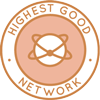 One Community is becoming the most reparative element through open source Highest Good Network® software that is a web-based application for collaboration, time tracking, and objective data collection. The purpose of the Highest Good Network is to provide software for internal operations and external cooperation. It is being designed for global use in support of the different countries and communities replicating the One Community sustainable village models and related components.
One Community is becoming the most reparative element through open source Highest Good Network® software that is a web-based application for collaboration, time tracking, and objective data collection. The purpose of the Highest Good Network is to provide software for internal operations and external cooperation. It is being designed for global use in support of the different countries and communities replicating the One Community sustainable village models and related components.
- Learn about our open source community collaboration and management software: The Highest Good Network
This week, the core team continued their work on the Highest Good Network PRs testing, confirming the fixed PRs and resolving several issues. Included for the week was the creation of the Quick-setup function permission (PR 2374 and PR 1078), replacement of the Badge Assignment search function (PR 2539), correction of invalid password alerts displaying appropriately (PR 2549), addition of permission buttons for components (PR 2512), fixing date validation to ensure the “To” date is later than the “From” date (PR 2587), and resolving page freeze issues when editing team names on the Team Management page (PR 1087 and PR 2627). These improvements contribute significantly to the overall user experience, becoming the most reparative element in addressing past issues. Additional fixes included improvements to the Tasks Contributed section on the People Reports page (PR 2651 and PR 2707), UX improvements for the Weekly Summary (PR 2622), and disabling the Badge Assignment tab unless a user has permission to assign badges (PR 2548). However, some issues remain unresolved, such as the reversion of the “Tasks” tab to the “Current Week Timelog” tab for volunteer accounts (PR 2342), indefinite loading indicators when creating new projects (PR 2596), a start date issue in the Add Task modal (PR 2335), and the scrollbar issue on the Team Management page (PR 2492), the need to manually refresh the page after deleting a team (PR 2728). Additionally, they logged 1 hour of tangible time for “CoreTeam TesterAgain” to test Core Team email hours (PR 958) and reported a problem with the Owner account’s inability to change other users’ passwords. We continue to focus on becoming the most reparative element through iterative improvements and user-centric solutions. See the Highest Good Society and Highest Good Network pages for more on how this relates to becoming the most reparative element. The collage below shows some of their work.
ALPHA SOFTWARE DEVELOPMENT TEAM
The Alpha Team’s summary, covering their work on the Highest Good Network software software was managed by Lin Khant Htel (Frontend Software Developer) and includes Anand Seshadri (Software Engineer), Jordy Corporan (Software Engineer) and Vishnu Priya Atheti (Software Developer). The Highest Good Network software is how we will manage and measure our processes for becoming the most reparative element across our social architecture, construction, production, and maintenance processes. This week, Lin reviewed and approved PR #2739, familiarizing himself with the codebase and running tests on his local machine, where all 9 test cases passed. He also reviewed the weekly summaries, photos, and videos submitted by his Alpha team members. Anand worked on improving the test case for badge validation in BadgeManagement.test.js, updating it to reflect the correct messages after changes were made to the original file, and merged PR 2740. He also fixed the date issue in the Edit Time feature while adding tasks, with those changes merged as well. Additionally, Anand resolved and merged merge conflicts related to the suggestion counter and dark mode in PR 2250. He began testing user profile features, focusing on assigned and subscribed sets, validating general texts, active popups, and component mounts, ultimately becoming the most reparative element in the team’s development process. Jordy made steady progress by reviewing additional pull requests, particularly on unit tests for the frontend impacting state management, enhancing his understanding of testing best practices and guidelines. Priya focused on reviewing the Phase III documentation guide and related resources, along with exploring the Figma design documentation for the application’s screens, which helped her gain a better understanding of the application’s functionality, design principles, and overall project requirements. See the Highest Good Society and Highest Good Network pages for more on how this relates to becoming the most reparative element. View some of the team’s work in the collage below.
BINARY BRIGADE SOFTWARE DEVELOPMENT TEAM
The Binary Brigade Team’s summary overseeing advancements in the Highest Good Network software was managed by Anirudh Sampath Kumar (Software Developer) and includes Aaryaneil Nimbalkar (Software Developer), Abhinav Ankur (Software Engineer), Ashay Kalpesh Mehta (Software Engineer), Ashmita Pandey (Software Engineer), Deepthi Kannan (Software Engineer), Huijie Liu (Software Engineer), Sai Venkatesh Voruganti (Volunteer Software Engineer), Sriram Seelamneni (Software Engineer), Vigneshwar Muriki (Software Engineer), Xiaolu Li (Software Engineer) and Ziyu Chu (Volunteer Software Engineer). The Highest Good Network software is how we’ll be managing and objectively measuring our process for becoming the most reparative element through our social architecture, construction, production, and maintenance processes.
This week, Aaryaneil continued work on transitioning the website to the highestgood.com domain by researching efficient methods for the domain move. He gained access to Cloudflare and Netlify to manage the domain redirection and configured the subdomain old.highestgood.com to maintain the Surge link. Aaryaneil created unit tests for actionItemsReducer.js, covering scenarios such as returning the action payload for the GET_ACTION_ITEMS action, handling unknown action types, and managing a null initial state. He also wrote unit tests for errorsReducer.js to handle cases like GET_ERRORS, CLEAR_ERRORS, and returning the correct state for unknown or missing actions. Additionally, he developed unit tests for handleSuccessReducer.js, including cases for handling REQUEST_SUCCEEDED, REQUEST_FAILED, unknown action types, and returning the default state when no action is provided. Abhinav worked on validating the functionality of the `ToggleSwitch` component using React Testing Library, becoming the most reparative element in ensuring a seamless user experience across the platform. All eight test cases passed, confirming that the component correctly renders different switch types, manages states, triggers the `handleUserProfile` function on state changes, and displays error messages for unknown switch types. The tests covered rendering, state behavior, and event handling effectively. Anirudh reviewed and approved three pull requests: PR 1114, PR 2738 & PR 2739 (which are related to each other), and PR 2740. For each, he performed unit testing, verified the code for adherence to the team’s coding standards, and focused on maintaining high code quality. In addition to this, Anirudh was added to the development team and worked on resolving a bug in HGN Phase 2. The issue involved the ‘Add Equipment’ page not redirecting to the equipment page after form submission. Anirudh identified the cause, implemented a fix, tested it, and raised a pull request (PR 2753) to address the problem, ultimately becoming the most reparative element in ensuring the project’s success and maintaining high code quality. Ashay implemented sorting based on the last modified item in the “Projects” section, ensuring that whenever he modifies a WBS or project name, the project moves to the top of the list as the most recently modified. He identified an issue where the project name change does not immediately reflect; the updated name only appears after clicking on the WBS and refreshing the page, while simply refreshing causes the project name to revert to its previous state. Ashay also noted that all fields in the categories section are appearing as undefined, preventing further actions. Additionally, clicking on “Inventory” redirects users back to the dashboard instead of the intended page, becoming the most reparative element in addressing these navigation issues.
Ashmita focused on addressing linting issues in the src/actions directory, using ESLint and other code formatting tools to improve code quality. She resolved errors and warnings, reducing the total from 368 to 251 across multiple files. These included allTeamsAction.js, authActions.js, badgeManagement.js, blueSquareEmailBCCAction.js, bmdashboard/invTypeActions.js, followUpActions.js, index.js, mouseoverTextAction.js, notificationAction.js, projectMembers.js, projects.js, reasonsActions.js, sendEmails.js, task.js, timeEntries.js, title.js, userManagement.js, userProfile.js, warnings.js, wbs.js, weeklySummaries.js, weeklySummariesAIPrompt.js, weeklySummariesReport.js, and weeklySummariesReportRecepients.js. Deepthi worked on resolving issues related to the weekly summaries page in PR 2246, testing both the existing PR and the development branch, making necessary changes, and updating in a new PR. She is also working on enhancing the Teams page by adding a title with an “i” icon and adjusting the alignment for improved interface, preparing to create a PR for these changes. Additionally, she is addressing feedback on PR 2426 based on the received reviews, becoming the most reparative element in the development process by continuously refining the user interface and ensuring high code quality. Huijie completed the recalculation of tangible hours by rechecking the async processing pattern in the fix PR and using Postman to initiate the recalculation task on the Azure server. She made an API call to trigger the task and later performed another API call to retrieve the status, confirming the task completion with a message and timestamp. Additionally, she worked on resolving error popups during user creation by fixing the backend code, ultimately becoming the most reparative element in the project by ensuring a seamless user experience. Sai worked on enhancing the performance of the blue square deletion feature in the Profile > Blue Square Section. Previous versions of the feature had issues, such as squares reappearing after deletion or not being deleted at all. To resolve these problems, Sai analyzed and debugged the underlying React and Node.js code to improve the reliability of the deletion process and provide a smoother user experience. Sriram worked on resolving merge conflicts in one of his pull requests to prepare it for merging and completed a re-review of another requested pull request. He began addressing a new task related to fixing the user_id bug and made progress on that. In addition, he re-visited the WBS unit testing task and reviewed feedback on the related pull request. While reviewing the progress on the bug fix, he started a new branch and made further progress, becoming the most reparative element in the team’s efforts to enhance the application’s functionality.
Vigneshwar focused on improving the testing coverage for Redux action creators and thunks were instrumental in becoming the most reparative element of the codebase. His work involved writing unit tests for the `getProjectReport` function and related action creators, such as `getProjectReportBegin` and `getProjectReportEnd`. Additional test cases were introduced to cover various execution scenarios, including ensuring that actions are dispatched in the correct sequence and handling potential failures. These tests also verify the proper handling of errors, such as when fetching project details or other resources fails, and confirm that no actions are dispatched if the projectId is invalid. In cases where partial data fetching fails, the test cases ensure the process continues for other parts while validating the payloads passed to dispatched actions, ultimately becoming the most reparative element in enhancing the system’s resilience and reliability. Vigneshwar also utilized `jest.spyOn` to track asynchronous dispatch calls, adding validation to the asynchronous behavior of the code. Xiaolu focused on optimizing the app for Firefox as part of the HGN Phase I Bugs and Needed Functionalities task. After testing the app’s functionality, data, and interface in Firefox, Xiaolu found that it performed consistently with Chrome, with no bugs identified so far. A video comparison was recorded and placed in the video summary folder. Additionally, Xiaolu encountered issues while running the app in Chrome. When logged in as an admin, attempting to delete a badge resulted in a failure and an error in the browser console. Similarly, when logged in as a volunteer and trying to save changes to badges, the browser console showed a 403 error. Screenshots of these issues have been uploaded to the week 3 folder for review, highlighting the need for robust troubleshooting measures that contribute to becoming the most reparative element in the app’s development process. Ziyu began working on bug-fixing tasks. She selected the task “Optimize the app for Edge” and is currently investigating whether there are any JavaScript errors in the console for both Chrome and Microsoft Edge. During this comparison, she identified some compatibility issues with the Edge browser as well as a bug on the profile page. Ziyu is now working on fixing the compatibility issues related to the Edge browser. See the Highest Good Society and Highest Good Network pages for more on how this relates to becoming the most reparative element. View some of the team’s work in the collage below.
BLUE STEEL SOFTWARE DEVELOPMENT TEAM
The Blue Steel Team’s summary, presenting their work on the Highest Good Network software was managed by Jingyi Jia (Software Engineer, Team Manager), and includes Cillian Ren (Software Engineer) and Ramakrishna Aruva (Software Engineer). The Highest Good Network software is how we’ll be managing and objectively measuring our process for becoming the most reparative element through our social architecture, construction, production, and maintenance processes. This week, Cillian worked on identifying and resolving issues with the project list functionality in the Highest Good Network project, concentrating on the root cause of errors in the archived project list. His efforts included troubleshooting, reviewing the codebase, and making necessary adjustments to ensure the project list displayed the correct data. Jingyi completed a follow-up pull request to gray out names on the leaderboard for individuals currently on time off and integrated a tooltip feature to provide clarity on the duration of time off. These updates were tested to ensure they met the specified requirements without introducing new issues. Meanwhile, Ramakrishna enhanced the rendering functionality of the weekly summary component by pulling the latest development updates and refactoring methods within class components into functional equivalents. See the Highest Good Society and the Highest Good Network pages to learn more on how their work contributes to becoming the most reparative element. See below to view images of their work.
CODE CRAFTERS SOFTWARE DEVELOPMENT TEAM
The Code Crafters Team’s summary, covering their work on the Highest Good Network software, was managed by Akilan Kumaran (Software Engineer) and includes Ambika Kabra (Software Engineer), Chetan Sunku (Software Engineer), Denish Kalariya (Software Engineer), Dhrumil Dhimantkumar Shah (Software Engineer), Muzammil Moahmmed (Software Engineer), Pavan Swaroop Lebakula (Software Engineer), Summit Kaushal (Backend Software Developer), Swaroop Udgaonkar (Software Engineer), and Yashwanth Pokala (Software Engineer). The Highest Good Network software is how we’ll manage and objectively measure our process for becoming the most reparative element through our social architecture, construction, production, and maintenance processes. This week, Ambika created pull request 2741 in the frontend repository and worked on fixing the “Set Final Day” function. She added a hotfix as per Jae’s request on Slack to address the issue of media URLs not being visible in user profile titles. Ambika also reviewed the implementation of the active status feature, set up a Google Cloud account, followed the setup instructions to create API keys using her personal email, and watched instructional videos related to Ivy’s pending work. Additionally, she reviewed the implementation of PR 1033 and other features, and attempted to configure emails using her personal Gmail account. Chetan revisited a previously resolved bug for a hotfix that had passed multiple reviews but could not be recreated by higher authorities. Upon further investigation, Chetan discovered that the solution, which had worked earlier, was no longer functioning and is continuing to investigate the issue, becoming the most reparative element in the team’s efforts to maintain system stability. Denish completed five pull request reviews and transitioned to the Software Development team under Summit’s supervision. He reviewed the Phase 1 and Phase 2 documentation, selected the implementation of sorting and searching functionalities for the Project Details view, and shared his plan with Jae for the next steps. Muzammil joined Code Crafters as a software engineer and connected with the team manager to understand processes such as pull requests, bug fixing, and unit testing, ultimately becoming the most reparative element by reviewing key documents related to the HGN phases. Pavan worked on reducing vertical space usage in the Dashboard Task’s “Edit” formatting and investigated a date selector issue on Mac devices, though the issue could not be reproduced. Swaroop completed adding a notification feature for new project creation and reviewed Diya’s pull requests while researching relevant JavaScript functions for his next task. He also followed up on team members’ submissions through Slack and direct messages as part of his responsibilities as a Manager in Training. Dhrumil worked on unit test cases for UserManagement.jsx and contacted Jae to resolve a permission access issue before moving on to Teams.jsx unit test cases. Yashwanth continued working on the “Make permissions changes to an individual” feature and discussed extending the hours for the task with Jae. He also completed the “update password error” task and submitted it for review, before beginning work on another task requested by Jae. Summit focused on badge update issues, identifying additional bugs related to aggregation and implementation, and communicated team expectations to new members while continuing to investigate badge discrepancies. See the Highest Good Society and Highest Good Network pages for more on how this relates to becoming the most reparative element. The collage below shows some of this work.
DEV DYNASTY SOFTWARE DEVELOPMENT TEAM
The Dev Dynasty Team’s summary, covering their work on the Highest Good Network software, was managed by Harsh Bodgal (Software Engineer) and includes Ajay Kumar Reddy (Software Engineer), Crystal Low (Software Engineer), Howie Miao (Software Engineer), Jatin Agrawal (Software Engineer), Manikrishna Sanganabatla (Software Engineer), Nandini Yelmela (Software Engineer), Sailavanya Narthu (Software Engineer), Shreya Vithala (Software Engineer), Nikita Kolla (Full Stack Developer) and Nishita Gudiniye (Software Engineer). The Highest Good Network software is how we’ll manage and objectively measure our process for becoming the most reparative element through our social architecture, construction, production, and maintenance processes. This week, Harsh added tasks to the bug documentation, discussed backend implementations with Faye, and assisted Howie with refactoring a feature by analyzing the existing code and requirements. He also onboarded a new volunteer and collaborated with Faye on analyzing progress in totalOrgsummary, focusing on APIs and missing data for charts, as well as identifying gaps in data for charts in total orgsummary. Crystal worked on resolving an issue in the Tasks section, ensuring team members with the visibility toggle set to “off” cannot view other team members’ tasks. She implemented backend changes to verify team visibility status and confirmed that this functionality works for users with the volunteer role. Testing is ongoing for other roles before pushing the code, becoming the most reparative element in enhancing data security and user experience within the project. Ajay improved the Team Locations search functionality by fixing an issue where the search results did not display all columns properly. He adjusted the search list box to show all three columns: Name, Email, and Location, and added sorting capabilities to the “User List.” He modified ListUsersPopUp.jsx, TeamLocations.css, and TeamLocations.jsx to implement these changes. Shreya focused on writing unit tests for the FormattedReport component of the Weekly Summaries Report feature, testing rendering, error handling, and filtering functionalities. She also worked on improving unit tests for the Leaderboard feature to ensure reliable test coverage and functionality, becoming the most reparative element in the overall development process. Nishita contributed to the “Help finish Lint fixing” task, learning Prettier and ESLint to improve code quality. After resolving node version issues, she made configuration changes to identify linting errors. Howie focused on resolving an old system date timelog bug and learned websockets to develop a backend solution for retrieving the system date, addressing challenges with the webhook call. He also dealt with issues from a previous hotfix earlier in the week. Jatin worked on improving the loading time for total team reports. He determined that calculations should be saved in the backend to reduce frontend load times, though the issue remains unresolved. A replacement service for the HGN Software Development project was also a focus, with tasks involving implementing TwitterAuthService on the frontend, testing, and debugging the PinterestAuthService class. A new class was introduced for more secure user login and authentication. The team made solid progress on resolving bugs, improving backend efficiency, and enhancing overall functionality. See the Highest Good Society and Highest Good Network pages for more on how this relates to becoming the most reparative element. View some of the team’s work in the collage below.
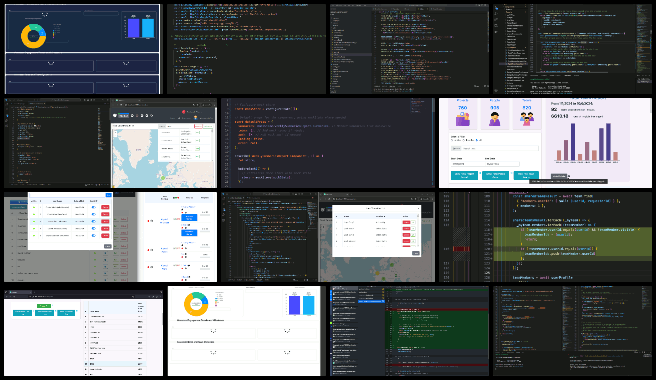
EXPRESSERS SOFTWARE DEVELOPMENT TEAM
The Expressers Team’s summary, covering their work on the Highest Good Network software, was managed by Christy Guo (Software Engineer) and includes Faye Lyu (Software Engineer), Mohammad Abbas (Software Engineer), Reina Takahara (Software Developer), and Strallia Chao (Software Engineer). The Highest Good Network software is how we’ll manage and objectively measure our process for becoming the most reparative element through our social architecture, construction, production, and maintenance processes. This week, Christy reviewed pull requests related to the UpdatePassword component, state management in reducers, token validation, and form validation. Faye addressed an API issue and reinstalled MongoDB after debugging. Mohammad improved system update timings and enhanced the search functionality. Reina submitted a pull request for sorting equipment and initiated backend updates. Strallia worked on a line chart and resolved a Redux state issue. See the Highest Good Society and Highest Good Network pages for more on how this relates to becoming the most reparative element . See the collage below to view the team’s work this week.
MOONFALL SOFTWARE DEVELOPMENT TEAM
The Moonfall Team’s summary, covering their work on the Highest Good Network software was managed by Anne Zhang (Software Engineer) and includes Calvin Liu (PR Team), Gaurav Setty (Software Engineer), Lu Wang (Software Engineer), Saurabh Shetty (Software Engineer), Satya Shanthi Tadiparthi (Software Engineer), Shefali Mittal (Volunteer Software Engineer), Swathi Dharma Sankaran (Software Engineer), Tharunaa Shoban Babu (PR Team A-H), Vedant Gandhi (Software Engineer), and Yili Sun (Software Engineer). This week, Anne fixed spacing issues in WBS task rows and created a pull request. She has worked on a badge deletion issue while starting to learn about unit testing. Calvin joined the team and reviewed issues from HGN Phase I and II. He has selected two to work on and introduced layout improvements for InventoryTypesList.jsx. Gaurav continued improving the Quick Setup Tool by modifying APIs and tested new functionalities. He has implemented real-time updates and optimized API performance. Lu focused on unit tests for the PeopleReport/components/PeopleTasksPieChart.jsx component and expanded coverage, becoming the most reparative element in ensuring the code’s reliability and maintainability. He has resolved rendering and data binding issues. Rishabh also joined the team, reviewed documentation, selected a feature from Phase 2 to develop, and resolved a bug. Satya worked on resolving Teams UI issues, including table alignment and padding adjustments for different screen sizes, and has been crucial in becoming the most reparative element in our development process, as he effectively managed several pull requests, began thorough unit tests, and worked on documentation for an upcoming announcement. Saurabh has reviewed the bugs page and selected a Phase 2 task. He has investigated a login issue, communicated with the issue raiser for clarification, and started working on improving the Phase 2 login form UI, which differs from the Phase 1 version. Shefali updated unit test documentation and verified folder structures. She has revised the unit test case sheet and completed unit test document verification. Swathi added a button to display paused tasks in the WBS detail view and encountered issues with filtering and status fields. She began unit testing and reviewed a pull request related to dark mode on the Reports page. She has worked on paused task filtering and addressed a table UI hotfix. Also, Swathi has adjusted resource alignment and row height. Tharunaa completed 10 pull requests this week, which included bug fixes, feature enhancements, and performance optimizations that improved the project’s functionality and stability, becoming the most reparative element of the overall development process. Vedant addressed a build error, added sorting and search functionality to the Inventory Type List, made changes from a previous pull request, and resolved an ongoing bug. He also completed the search functionality. Yili resolved merge conflicts and worked on the Assign/Edit/Delete Blue Squares Permission issue. She identified a related problem with permission assignment and addressed a new problem with editing blue squares. See the Highest Good Society and Highest Good Network pages for more on how this relates to becoming the most reparative element. Below is a collage for the team’s work.
REACTONAUTS SOFTWARE DEVELOPMENT TEAM
The Reactonauts Team’s summary, covering their work on the Highest Good Network software, was managed by Changhao Li (Software Engineer). It included Aishwarya Ramesh (Software Engineer), Dhairya Mehta (Software Engineer), Haoyue Wen (Software Engineer), Gmon Kuzhiyanikkal (Software Engineer), Ishan Goel (Software Engineer), Jinxiong You (Software Developer), Mohan Gadde (Software Engineer), Nikhil Pittala (Software Engineer), Peterson Rodrigues dos Santos (Full-Stack MERN Stack Developer), Rishitha Mamidala (Software Engineer), Saniya Farheen (Software Engineer), and Yash Agrawal (Software Engineer). The Highest Good Network software is becoming the most reparative element across social architecture, construction, production, and maintenance processes. This week, Aishwarya worked on the trophy icon display function for the weekly report summaries page, addressing various issues during testing. Changhao focused on unit test development, managed the software development team, and guided new team members on development-related issues, emphasizing finalizing setups and tests for timeentry.jsx. He closely monitored task progress and time logs while assigning tasks to team members and helping them find appropriate tasks, becoming the most reparative element in the team’s workflow. Dhairya resolved a user discovery issue in the “Projects find user” function and enhanced the sort and search functionality to improve user assignment processes.
Gmon added active and inactive team numbers to the team page, created a new branch for this functionality, and completed his bio for the main page. Haoyue improved the “Team Code” field in the Quick Setup Tool, ensuring it suggested only active team codes and added a color change for updates. Ishan resolved high-priority bugs by reproducing them locally, providing detailed comments and screenshots for GitHub pull requests, and submitted a weekly summary report with media uploads, becoming the most reparative element in enhancing the team’s overall efficiency and collaboration.
Jinxiong reviewed five pull requests, focusing on unit tests, spacing issues, and bug identification in task management components, becoming the most reparative element in ensuring code quality. Mohan fixed an issue in the User Management feature that caused a white screen when creating a new user and submitted a pull request to resolve it. Nikhil completed reviews on 12 pull requests, covering front-end and back-end tasks, and addressed functionality improvements and unit test analyses. Peterson fixed a bug on the User Management page where the screen would turn white when entering the Team Code, ensuring it now functions correctly.
Rishitha reviewed four pull requests that passed testing, including unit tests and reducers for various actions, and also resolved a materials purchase request bug. Saniya modified the prompt behavior on the dashboard but encountered issues with task assignments that required further discussion. Yash created a spreadsheet to track tasks, deadlines, and responsibilities for the listing and bidding engine project, improving coordination and project management. See the Highest Good Society and Highest Good Network pages for more information on how this relates to becoming the most reparative element. See the collage below for the team’s work this week.
SKYE SOFTWARE DEVELOPMENT TEAM
The Skye Team’s summary covering their work on the Highest Good Network software was managed by Deepthi Arcot Subramanyam (Data Analyst) and Luis Arevalo (Software Engineer) and includes Angela Cheng (Full Stack Developer), Abi Liu (Software Developer), Gowtham Dongari (Software Engineer), Kyrene Flores (Software Engineer), Laura Cohen (Software Engineer), Sai Preetham Dongari (Full Stack Developer), Snehal Dilip Patare (Software Engineer) and Yao Wang (Software Engineer). The Highest Good Network software supports becoming the most reparative element in social architecture, construction, production, and maintenance processes. This week, Luis completed the email-sending function, raised a PR for review, and ensured duplicates were removed, finalizing the process for sending an email when issuing a warning or blue square. He followed up with Jae for final approval, receiving feedback to cc the admin email and grant rights to admins and owners. Abi worked on reviewing PRs 1114, 910, 2740, and 2750, offering feedback and recommendations on best practices. He also assisted a new teammate on the weekly summary reports team, helping her get familiar with the code structure and onboarding her into the project, ultimately becoming the most reparative element in the team’s collaborative efforts. Laura completed one PR review to verify the visibility of invisibility indicators in both light and dark modes, joined the Skye development team, and reviewed document instructions for selecting bugs to work on. She examined the available bugs to identify a suitable task. Angela worked on the HGN Software Development project by creating a replacement service, implementing the TwitterAuthService on the front end, and testing its functionality. She researched Twitter’s OAuth 2.0 process and implemented a class similar to Pinterest integration, debugging to ensure the new PinterestAuthService class continued functioning. She also refactored the code to introduce a more secure class for user login and authentication, ultimately becoming the most reparative element in the project’s security architecture. Kyrene focused on a new phase of a project, swapping the project ID with the project name, using useSelector with useParams to match the project ID, and reviewing components to ensure correct alignment with buttons. Yao continued work on the “Write for Me” button feature, dealing with compatibility issues between the Google AI package and Node 14. Efforts to replace the package with the OpenAI API faced similar challenges, leading to the decision to keep the project unchanged and notify Jae of the situation. Snehal addressed a bug affecting the dashboard display for Bug Shengwei-Peter/Jae by identifying an issue with the user profile toggling for /dashboard/userid and adjusting conditions to display the correct user page. She is now verifying whether these changes affect other functionalities. Sai worked on a feature for accessing archived projects, developed an undo/unarchive functionality, and created a backend method to fetch archived projects. He implemented a new route for the front end, worked on logic to display archived files, completed the weekly summary, and organized Dropbox files for the week. See the collage below for the team’s work this week.
SOFTWARE PR REVIEW TEAM A-H
The PR Review Team’s summaries for team members’ names starting with A-H and covering their work on the Highest Good Network software was managed by Anoushka Hazari (Data Analyst). The Highest Good Network software is a foundation of what we’ll be using to measure our results for becoming the most reparative element. This week’s active members of this team were: Abdelmounaim Lallouache (Software Developer), Carl Bebli (Software Engineer), Lucy Xi (Software Engineer), and Geeta Matkar (Software Engineer). They reviewed all the Highest Good Network PRs (Pull Requests) shared in this week’s update. Learn more about how the Highest Good Network will measure and assist in becoming the most reparative element in the Highest Good Network open source hub. The collage below shows a compilation of the work from this team.
SOFTWARE PR REVIEW TEAM I-N
The PR Review Team’s summary for team members’ names starting with I-N and covering their work on the Highest Good Network software was managed by Saumit Chinchkhandi (Administrative Assistant and Software Engineer). The Highest Good Network software is a foundation of what we’ll be using to measure our results of becoming the most reparative element. This week’s active members of this team were: Khushi Jain Mahendra (Software Engineer), Kurtis Ivey (Software Engineer), Mrinalini Raghavendran (Software Engineer), Nahiyan Ahmed (Full Stack Software Developer), Nathan Hoffman (Software Engineer), and Nikhil Giri (Software Engineer). They reviewed all the Highest Good Network PRs (Pull Requests) shared in this week’s update. Learn more about how the Highest Good Network measures and assists in in becoming the most reparative element in the Highest Good Network open source hub. The collage below shows a compilation of the work from this team.
SOFTWARE PR REVIEW TEAM R-Sa
The PR Review Team’s summary for team members’ names starting with R-Sa and covering their work on the Highest Good Network software was managed by Olawunmi “Ola” Ijisesan (Administrative and Management Support) and Mrudula Chavali (Administrative Assistant and Data Analyst). The Highest Good Network software is a foundation of what we’ll be using to measure our results of becoming the most reparative element. This week’s active members of this team were: Pallavi Thorat (Software Engineer), Rachana Rizhkant Zha (Software Development Engineer), Rahul Trivedi (Software Engineer), Shengwei Peng (Software Engineer), Shaolei Long (Software Engineer), Shreya Laheri (Software Developer). They reviewed all the Highest Good Network PRs (Pull Requests) shared in this week’s update. Learn more about how the Highest Good Network will measure and assist in becoming the most reparative element in the Highest Good Network open source hub. The collage below shows a compilation of the work from this team.
SOFTWARE PR REVIEW TEAM T-Z
The PR Review Team’s summary for team members’ names starting with T-Z and covering their work on the Highest Good Network software was managed by Olawunmi “Ola” Ijisesan (Administrative and Management Support) and Samarth Urs (Administrative Assistant and Data Analyst). The Highest Good Network software is a foundation of what we’ll be using to measure our results of becoming the most reparative element. This week’s active members of this team were: Yiyun Tan (Software Engineer) and Ziyan Wang (Software Engineer). They reviewed all the Highest Good Network PRs (Pull Requests) shared in this week’s update. Learn more about how the Highest Good Network will measure and assist in becoming the most reparative element in the Highest Good Network open source hub. The collage below shows a compilation of the work from this team.
AND WE PRODUCED THIS WEEKLY UPDATES BLOG – CLICK HERE TO SUBSCRIBE
FOLLOW ONE COMMUNITY’S PROGRESS (click icons for our pages)
INVESTOR PAGES
GET INVOLVED
DONATE | WAYS ANYONE CAN HELP | MEMBERSHIP
CLICK HERE FOR ALL PAST UPDATES
 One Community
One Community

